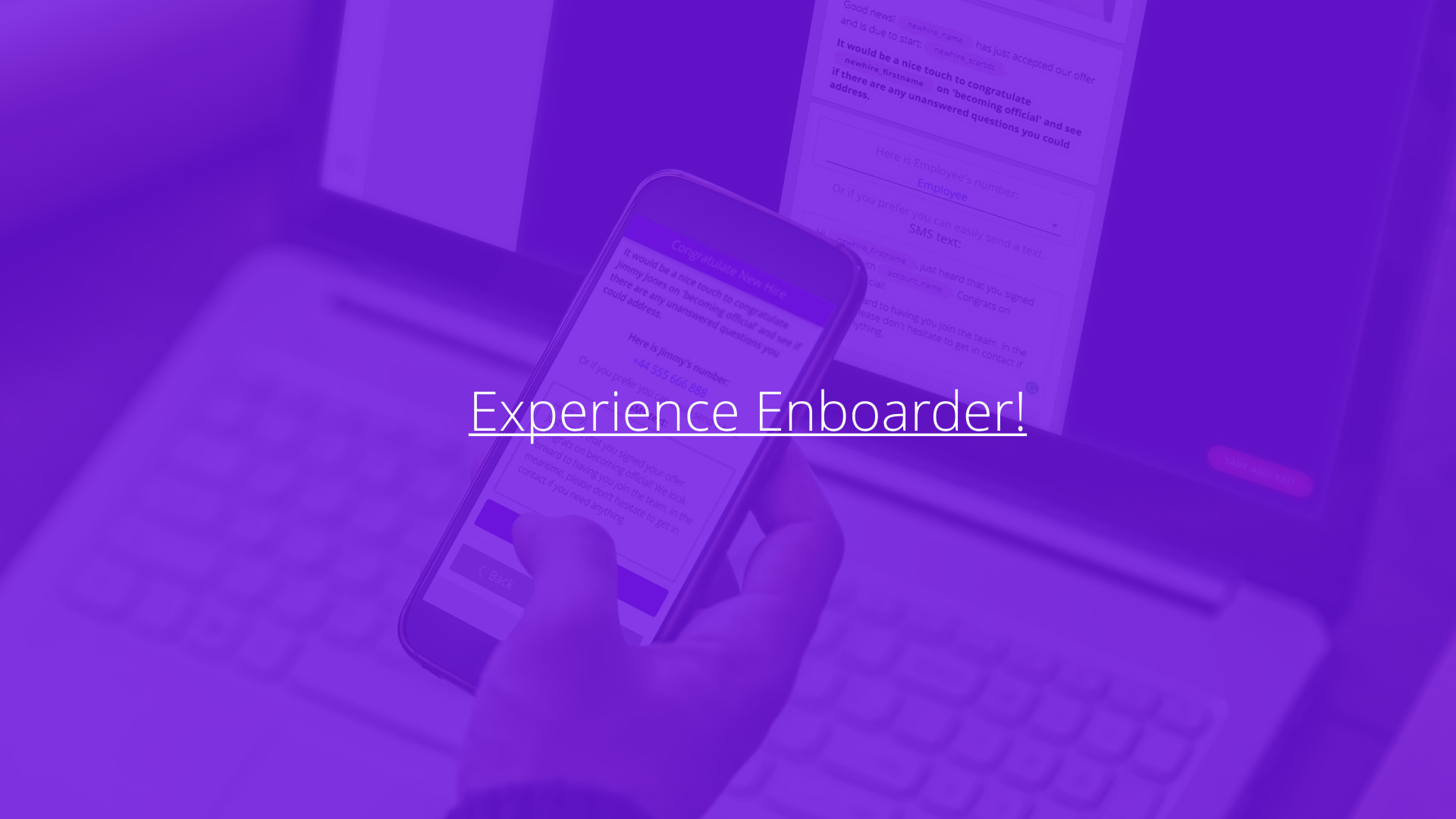The Great Experience-Driven Onboarding Journey
How Canva is Creating the Best Place to Work
This is an edited transcript of the following webinar. If you prefer to watch a video, it’s available here:
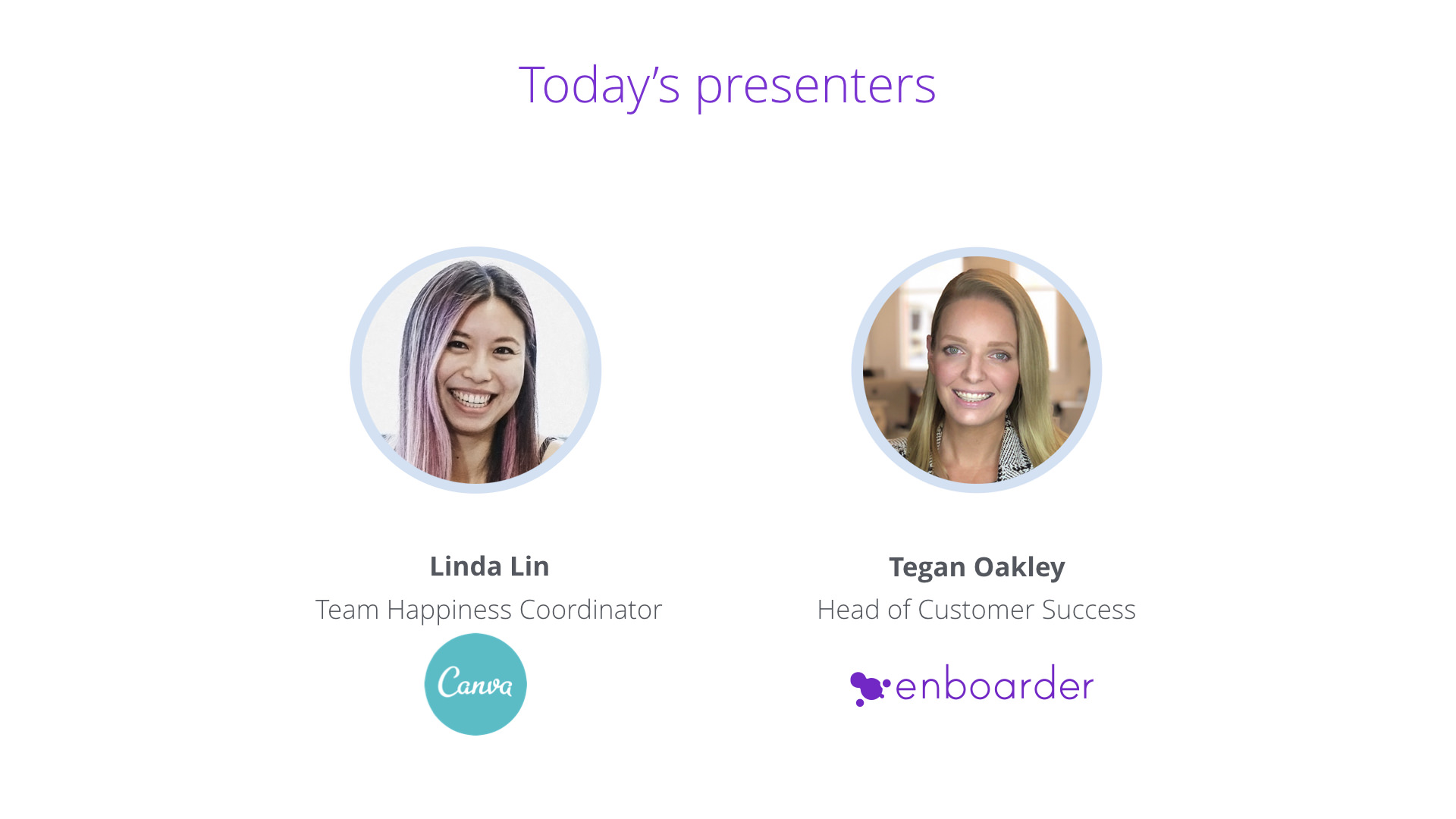
– [Tegan] Good morning and thanks so much for joining today’s webcast, The Great Engagement Led Onboarding Journey. Today’s topic is how Canva is creating the best place to work.
I’m very excited to have Linda Lin joining us from Canva.
– [Linda] Hi thank you.
– [Tegan] Wonderful. It’d be great to get a little bit of an overview of your role at Canva as Canva’s team happiness coordinator.
– [Linda] Yeah sure. I’m in the team happiness team at Canva. We call it team happiness in Canva but essentially it’s our employee engagement culture and HR team, and we look after the whole gamut of HR engagement culture. Everything from onboarding through to off boarding. One of the first things that I did when I started at Canva a couple years ago was actually setup the foundations of the onboarding program. So I’m really excited to be here today.
Agenda
Introduction to Canva
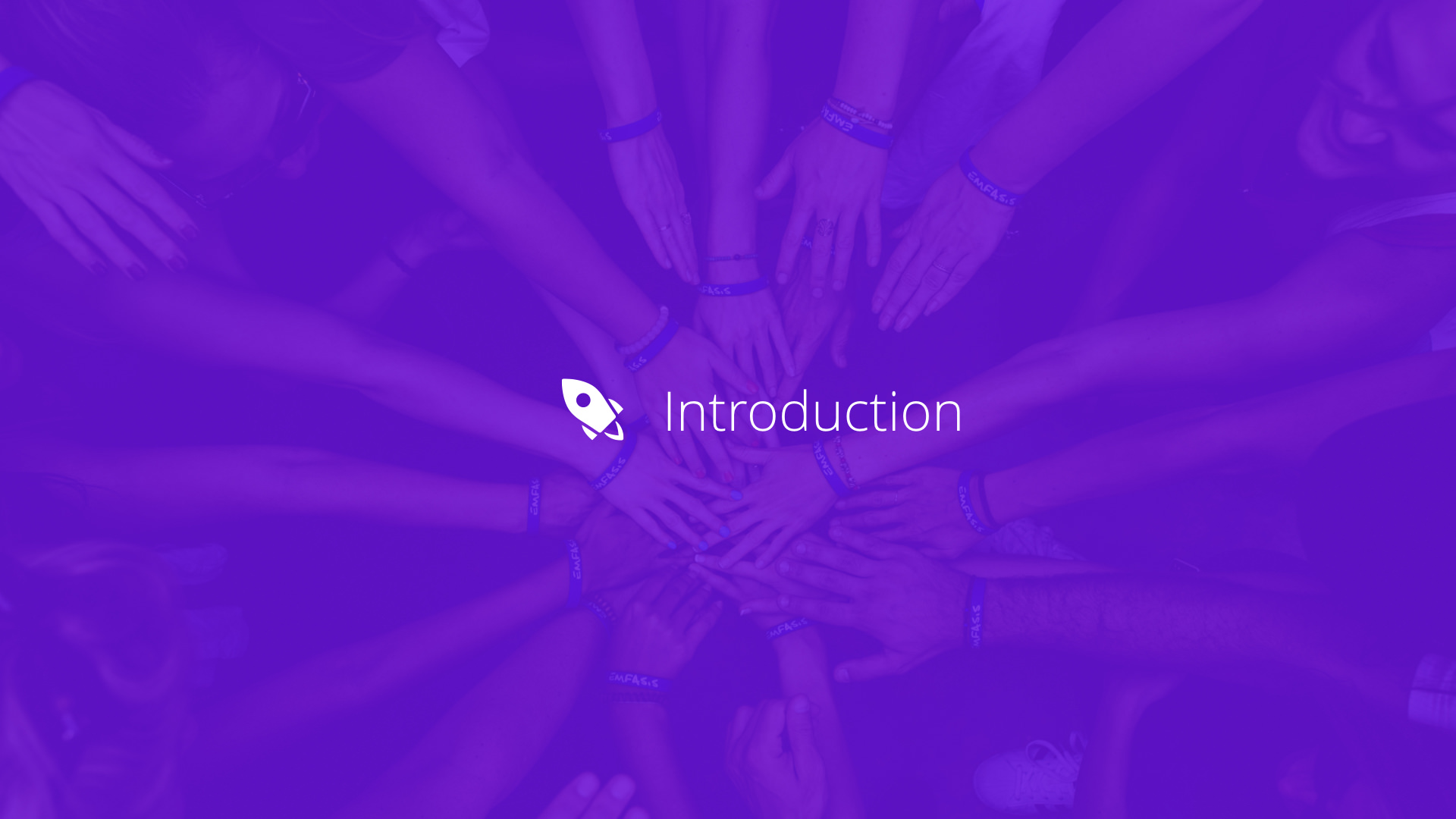
– [Tegan] Before we dive into the onboarding journey and the importance of the engagement at Canva it’d be great to get a bit of an update on where Canva is at from a growth perspective and hiring perspective currently.
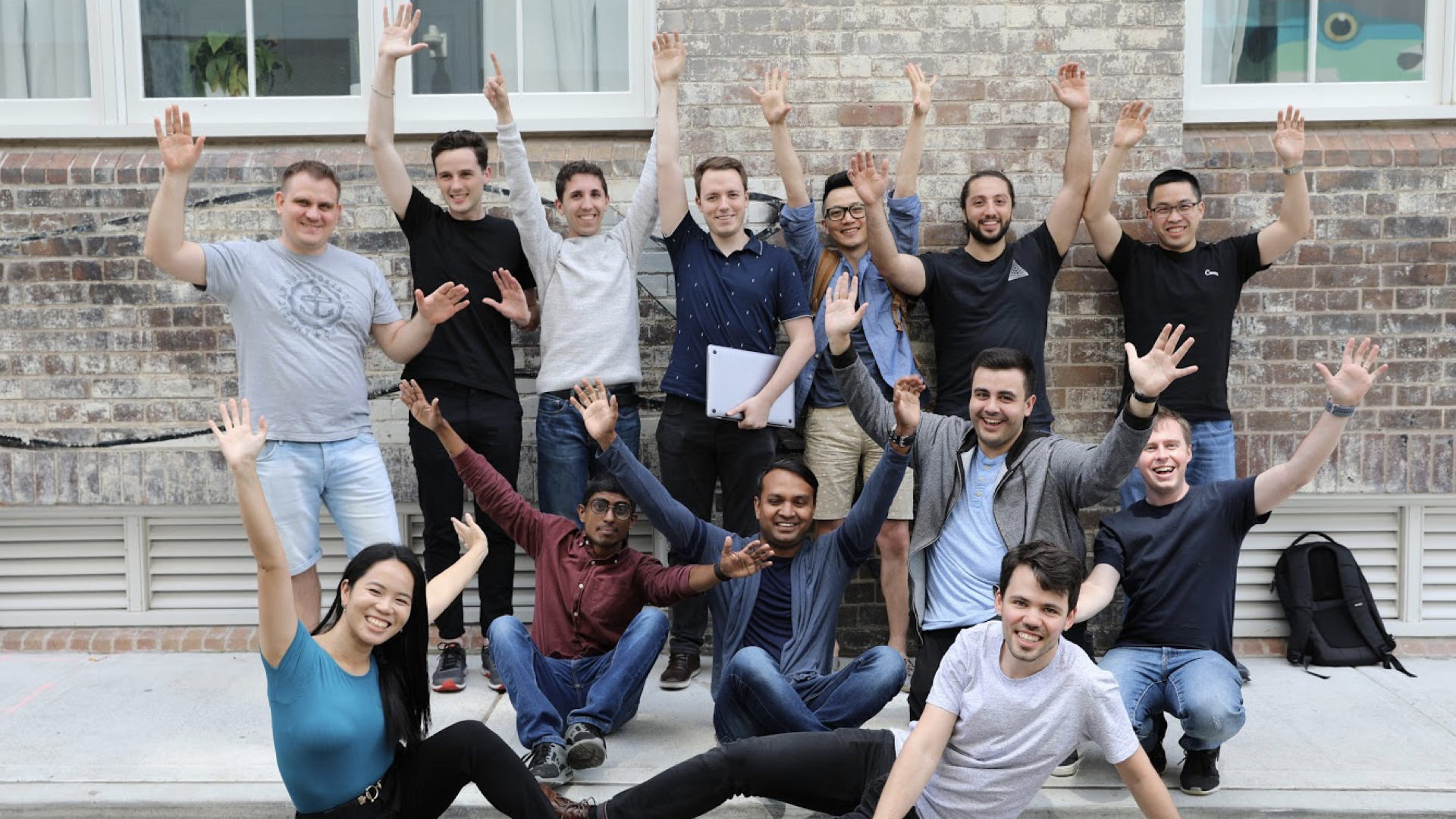
– [Linda] During the last two years that I’ve been at Canva we’ve doubled in size each year. So currently we are globally around more than 400 people and more than 300 in Sydney alone.
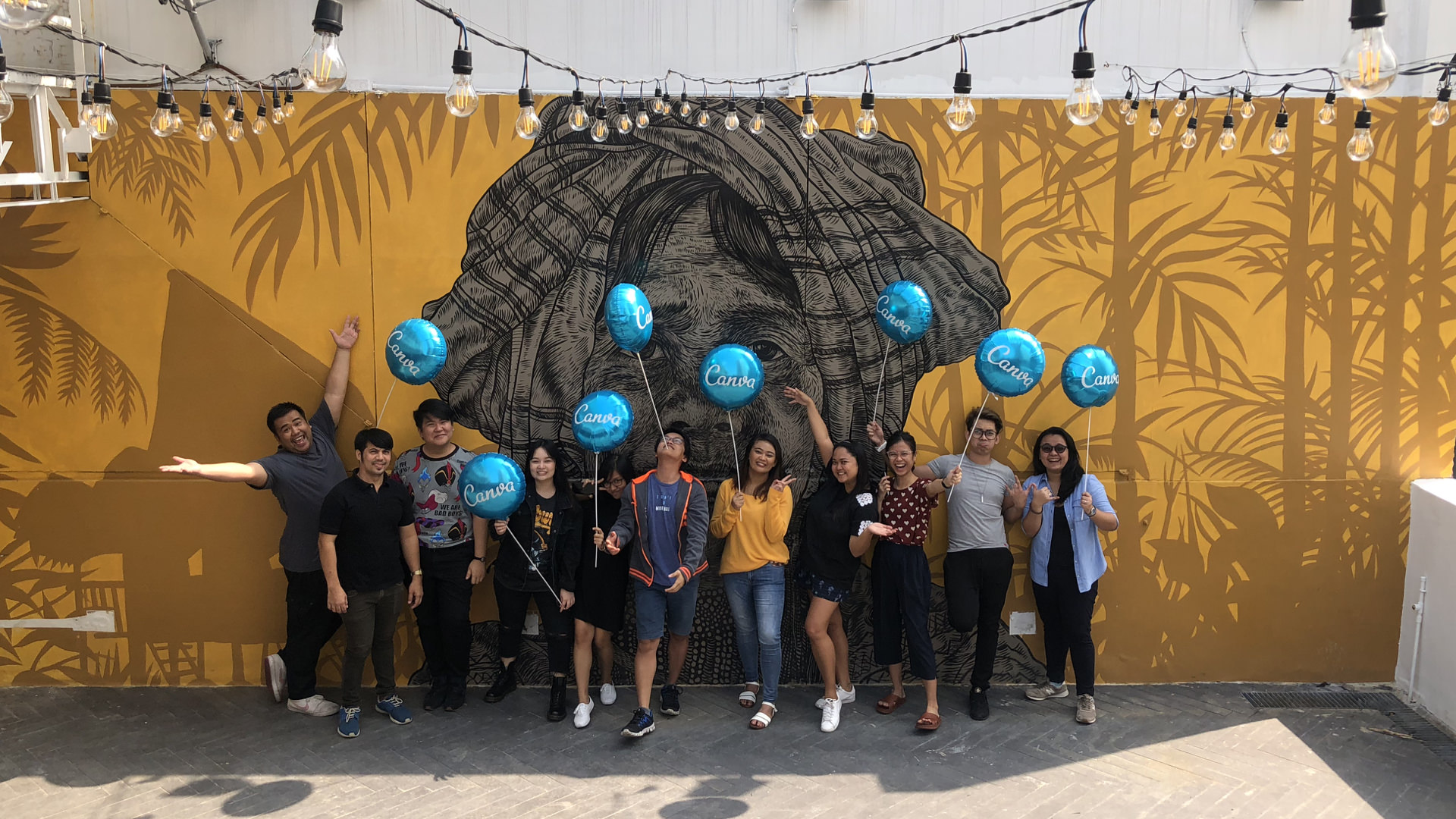
In the last 12 months or so we’ve actually onboarded 280 people globally and almost 200 people just in Sydney. That’s a huge amount of growth and more than 50% of our whole workforce have started within one year. So onboarding is a really, really important part of employee experience at Canva.
The Importance of Engagement
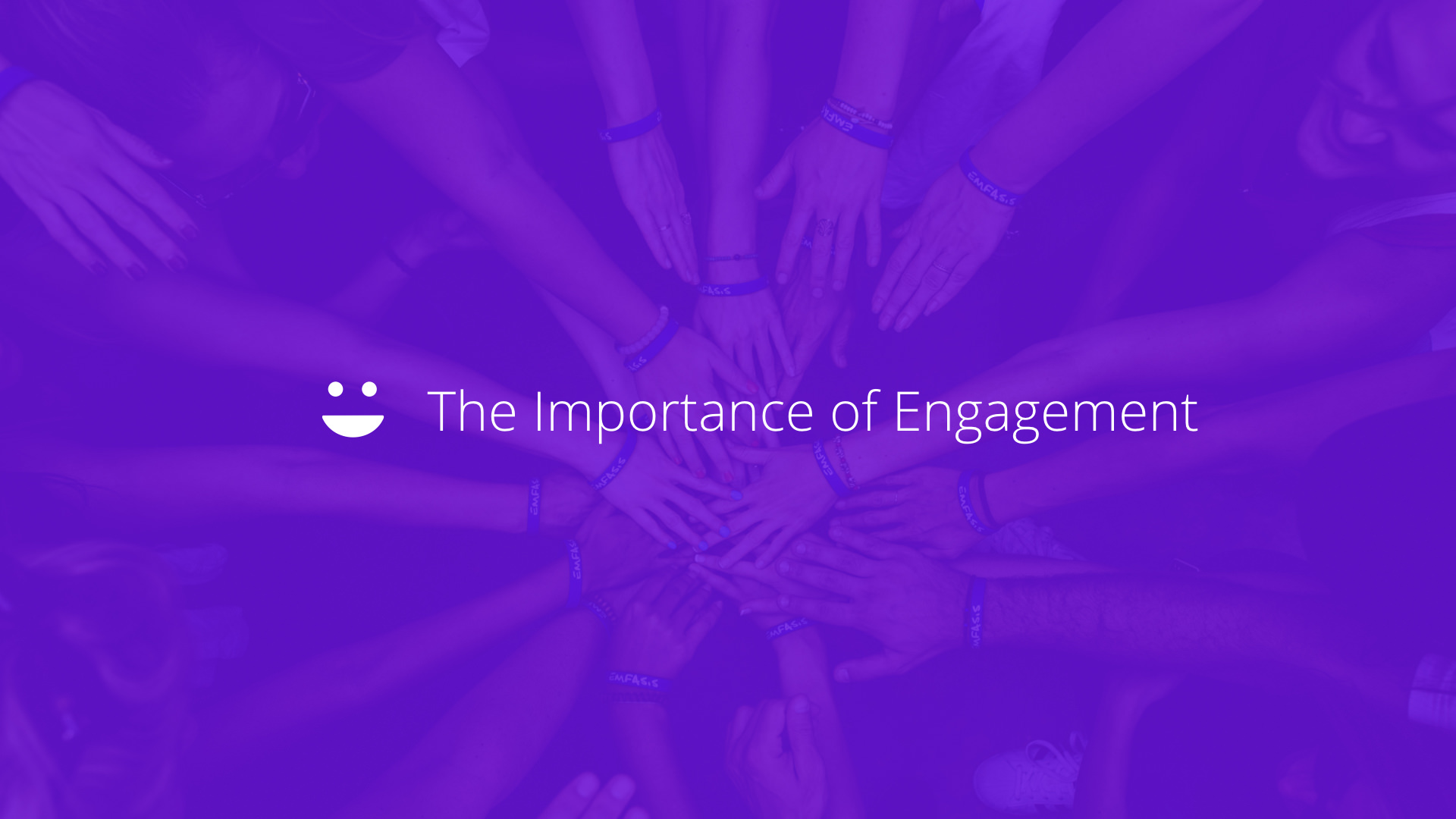
The Employee Onboarding Experience at Canva: Before
– [Tegan] It’d be great to get your perspective in regards to the engagement led approach to onboarding and employee life cycle at Canva. So if we think about your journey today, what did your onboarding experience first look like when you first joined Canva?
– [Linda] We had a few key onboarding sessions that we wanted people to attend and generally get up to speed on to do things. But it was quite ad hoc. There were a lot of things that changed, and there were last minute changes. Back then we had smaller cohorts, and were only onboarding about between five to 10 people each fortnight.
Since then we’ve grown and are reaching cohorts of about 20 to 30 people.
So the biggest challenge is how do we continue to scale a really, really amazing experience for people, but also make sure its consistent. We want people to get the same experience no matter how big or little the cohort is.
Another challenge is being able to tailor onboarding into different styles of learning as well. So while we have always had lots of face-to-face sessions, we now have much more documentation and information that is more readily accessible for people that want to follow up and read.
Canva’s Three Onboarding Goals
– [Tegan] Great. What would you say is today’s philosophy around employee engagement at Canva?
– [Linda] We have three main goals for our onboarding.
Firstly, we want to provide clarity and context. The context is about the broader company’s goals, the bigger picture, the roadmap, and where we’re heading. And we want to deliver clarity on what the person’s role is and how they contribute to the team, and the team’s success. It’s all about big picture and little picture, having really clearly defined goals and tasks for people. We recognize that it can be challenging coming into quite a big company. So it’s also about giving them little tasks that build their confidence, then incrementally expanding that scope.
The second goal for our onboarding is to have a really personalized and high touch mentor experience. We pair each of our newbies with a mentor. The role of the mentor is to get them ramped up and up to speed on all things related to their specific role, their tasks and their team. Generally speaking, the mentor will give them really clear direction and instruction during the initial few months at Canva, and also provide a lot of feedback on how they’re doing. We often hear people say “I can never get enough feedback. I constantly wanna know how I’m going.” And they help that newbie to be self sufficient in the first six months. So that’s the role of the mentor, to sit next to the newbie and help them.
The third goal that we have with our onboarding program is creating opportunities for social interaction and connections. We’ve embedded lots of activities throughout the onboarding program where newbies are meeting people on the team. So we have random coffee dates, which we’ll talk about later. This goal is also one of the reasons why we onboard in cohorts, because we want people to go through that experience together and have a support network and people they know right after that.
The Canva Onboarding Journey
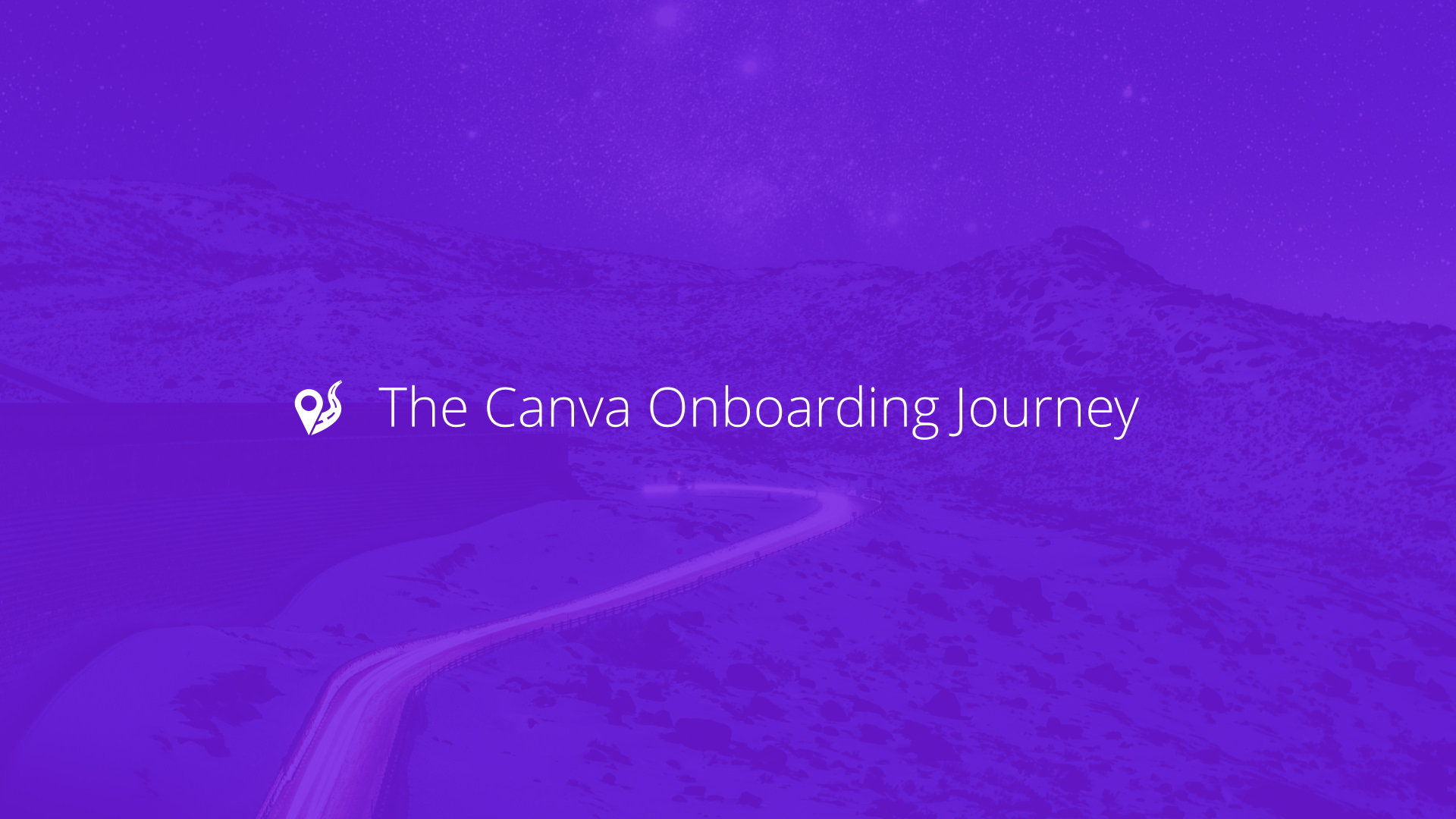
– [Tegan] Let’s take a deeper dive into the onboarding journey at Canva.

Canva’s New Hire Onboarding Timeline
– [Tegan] I’d love to hear a little bit more about what does each of the segment and stages look like. So at Canva I know that your onboarding actually starts before hiring. So could you explain what that means and how you would work with different teams to resource recruit and set goals for those roles?
– [Linda] When we think about the hiring part of the employee lifecycle, for most of our non-engineering roles we have very clearly defined roles and key skills that we’re looking for. So we have very clear ideas about what that new person is going to be doing.
On the other hand we also have a lot of “unlimited hiring” roles, where we know that we just need people, and we start thinking about which team to allocate a candidate to during the hiring stages.
So let’s look behind the scenes of what we do in preparation for someone starting, and also what happens during the different stages of onboarding.
Usually between the contract going out and them actually starting, we have a time period of between three to six months.
So the offer goes out, and the contract is signed.
And then for a lot of people we will need to coordinate visas and relocation. So all that will happen during the three months, or the three to six months before they actually start.
One month before their start date, we kick off some of the comms to the newbies. We get them really excited about what to expect when they start with us. That’s also the point at which we confirm the team and mentor, if that’s not already confirmed.
We’ve already set up their Canva email for them at this stage, so they will have started using that, and we kick start the onboarding emails.
To keep them engaged, we will invite them to some events if they’re in Sydney.
A week beforehand is crunch time. We start to make sure that everything is ready for their arrival which is all the practical things, their workspace, laptop, we make sure that they have onboarding sessions booked into their diary.
We make sure that paperwork is completed before they even start so it’s not something that we need to talk about in that first week. For the first week of someone’s start at Canva they’re usually in onboarding sessions.
We call it onboarding bootcamp because it’s basically one whole week dedicated to face to face workshops but also different activities and stuff. And they are designed to get them learning about the different parts of the business.
– [Tegan] And is that a standard first week? Does everyone go to the bootcamp in their first week?
– [Linda] Everyone goes to the bootcamp in their first week. The second week is when the person will start to actually sit with their team on a more regular basis and start to ramp up to their role.
Between months one to three the person is primarily going to be working with their team, asking a lot of questions, learning. We ensure they are getting regular feedback during the first three months, with daily then weekly check ins with their mentor.
At the third month mark we’ll kick off a 360 feedback survey for them. This allows them to get more formal feedback from the team on how they’re doing. From months three to six we want to see that person ramping up, and becoming more and more independent.
At the six month mark they should be totally independent and ready to actually mentor someone themselves, and that’s sorta when someone reaches probation.
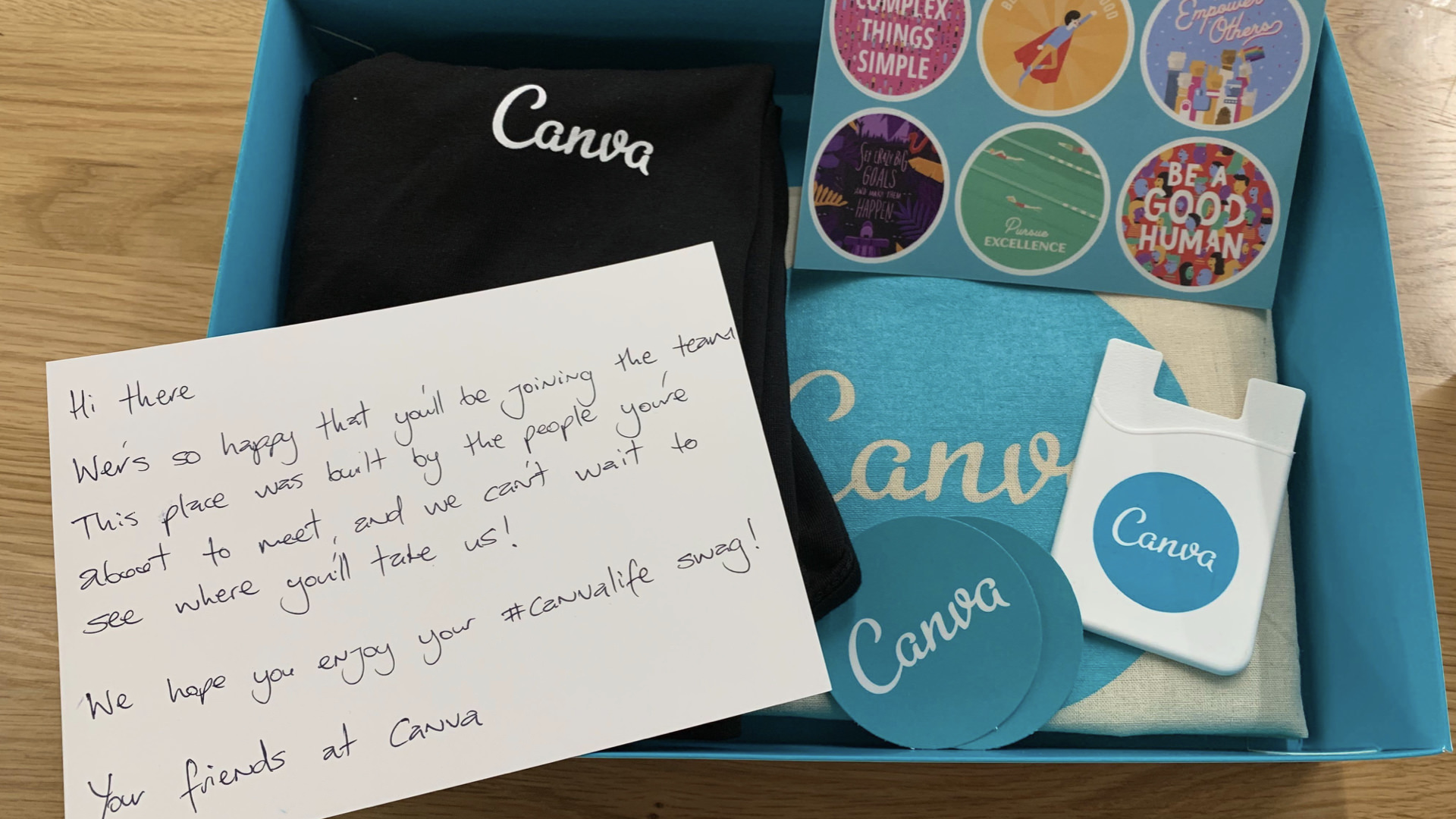
Communications to New Hires
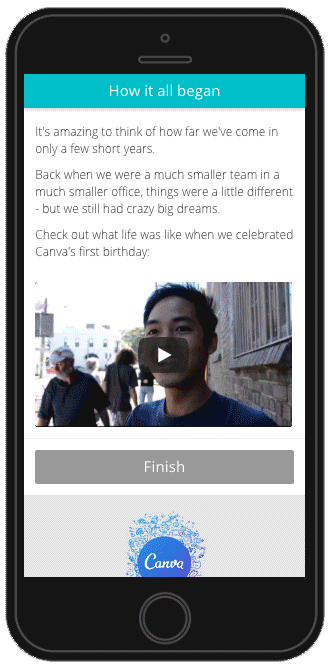
– [Tegan] Would you like to talk us through some of the images here in relation to the onboarding experience at Canva?
– [Linda] Yes, so these are some of the comms that we’ve built out for our newbies. We feed them comms once a week or so to get them excited about learning about Canva. We also show some videos.
We also use the time to send some comms around, or get some feedback around how they’re finding their onboarding journey so far. This allows us to check in with them or to jump in if there’s any issues. This is an example of some our comms that we’ve created through Enboarder. It is completely automated and people generally give us really great feedback. They love getting this content.
– [Tegan] Would you like to talk us through some of the images here in relation to the onboarding experience at Canva?
– [Linda] Yes, so these are some of the comms that we’ve built out for our newbies. We feed them comms once a week or so to get them excited about learning about Canva. We also show some videos.
We also use the time to send some comms around, or get some feedback around how they’re finding their onboarding journey so far. This allows us to check in with them or to jump in if there’s any issues. This is an example of some our comms that we’ve created through Enboarder. It is completely automated and people generally give us really great feedback. They love getting this content.

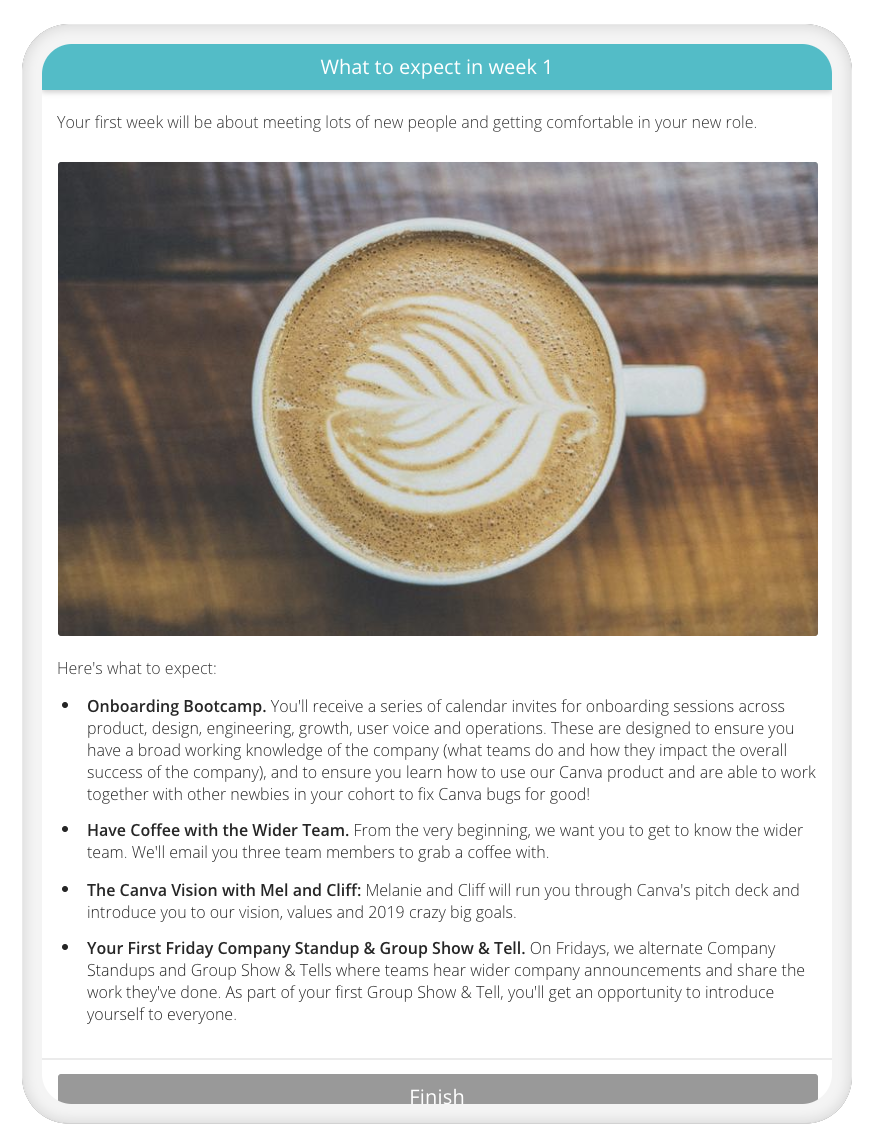
– [Linda] This is an example of what we send to them to say hey, here’s what you can expect on day one, and week one.
People really like knowing what’s coming up.
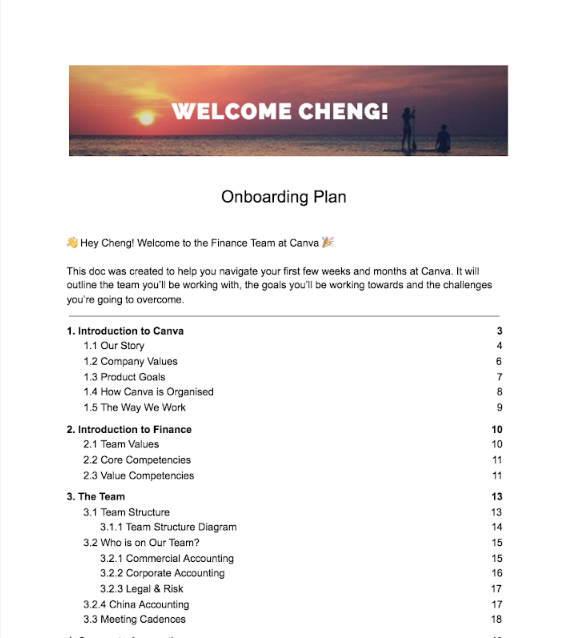
For all our newbies, our mentors actually prepare quite a detailed onboarding plan for them. The purpose is to have a really clear set of goals for that person.
So they introduce them to the team, and all the things that they need to know about the team. It goes even more granular, to talk about the goals that we’d like them to achieve in their first three to six months at Canva.
And so that really sets out their expectations for the newbie. It’s also a great way to collate all of the really important information or documents and links for that person, so they have a one-stop shop to come back and reference their goals and the resources at their disposal.
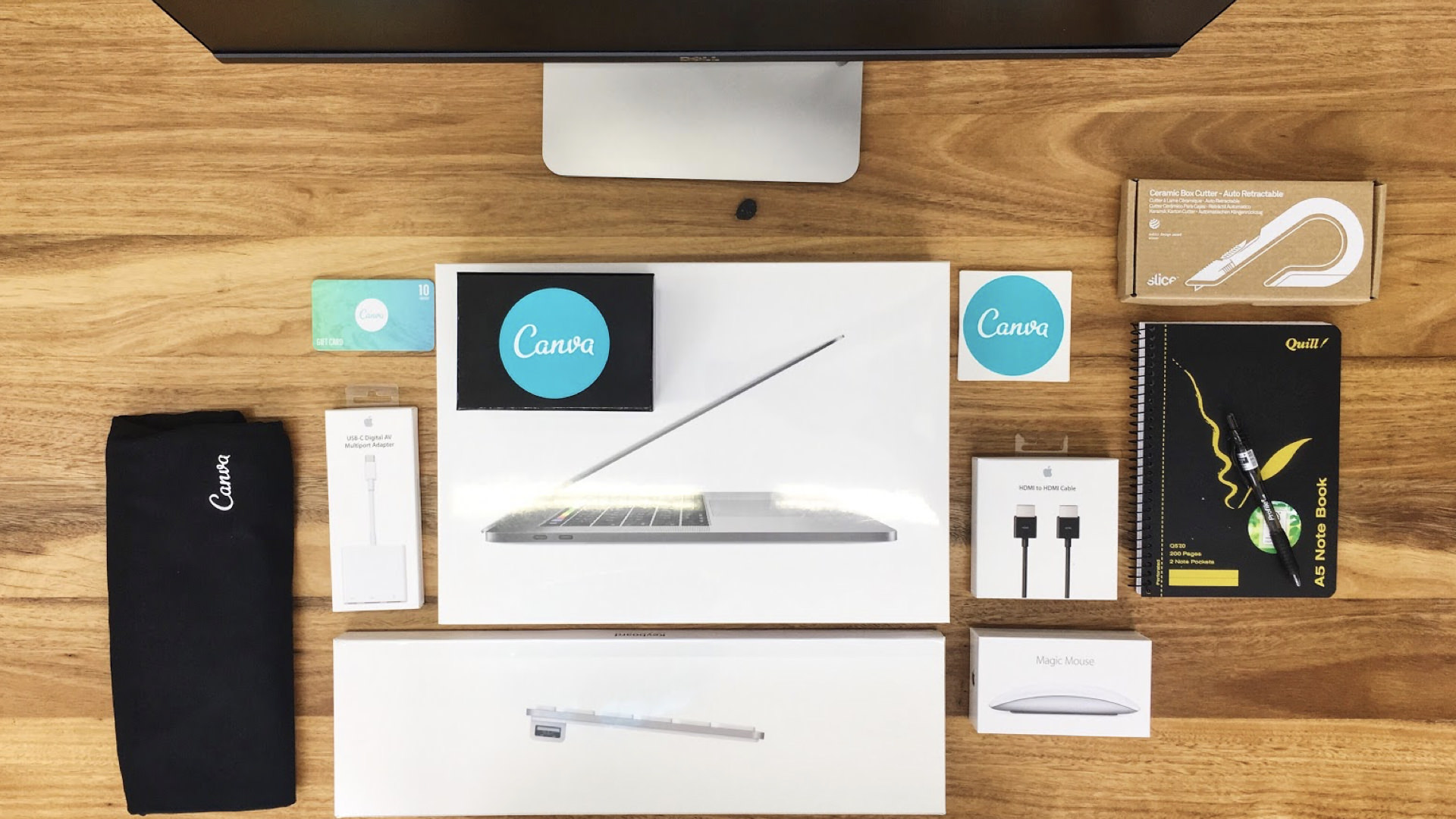
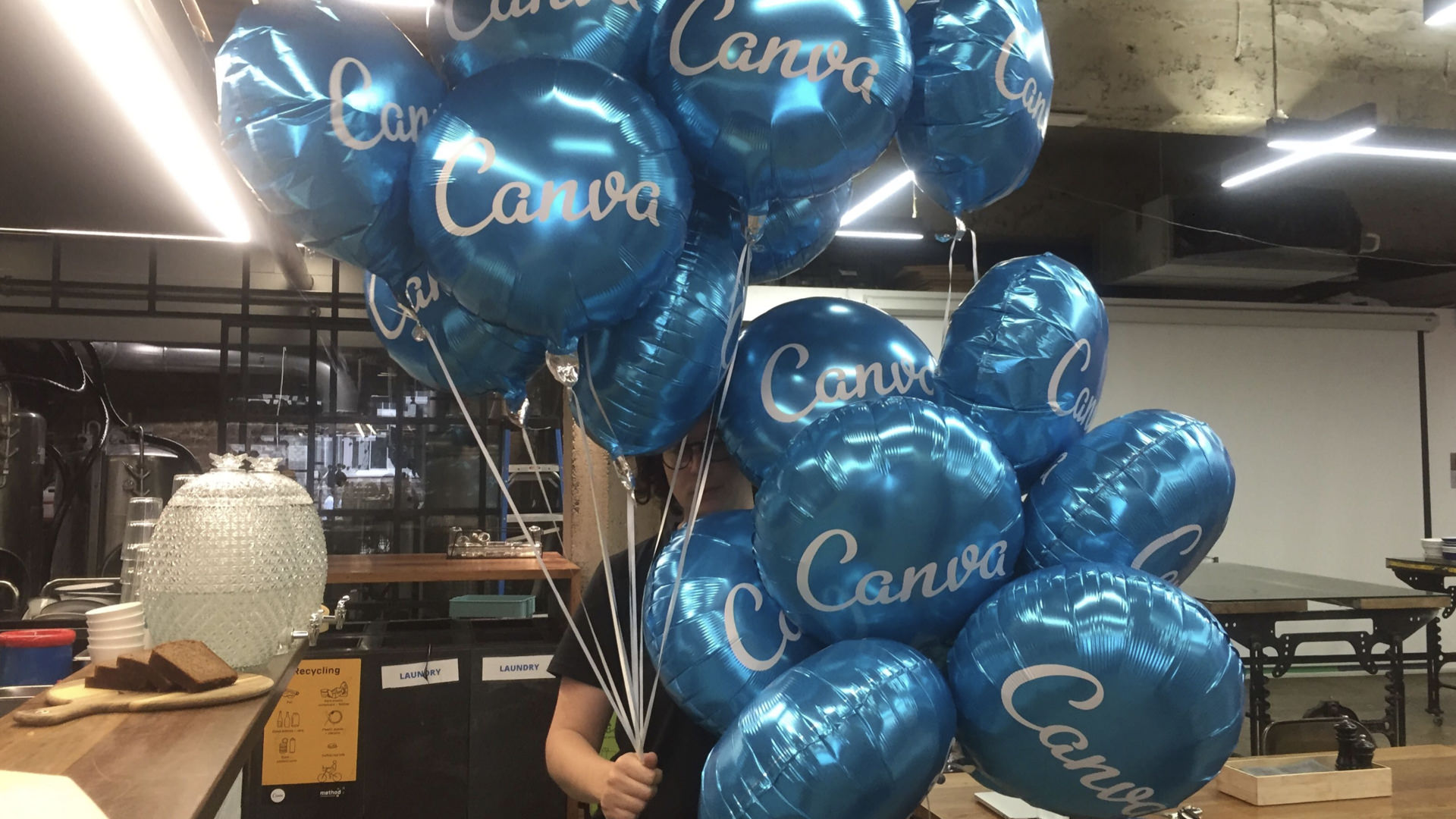
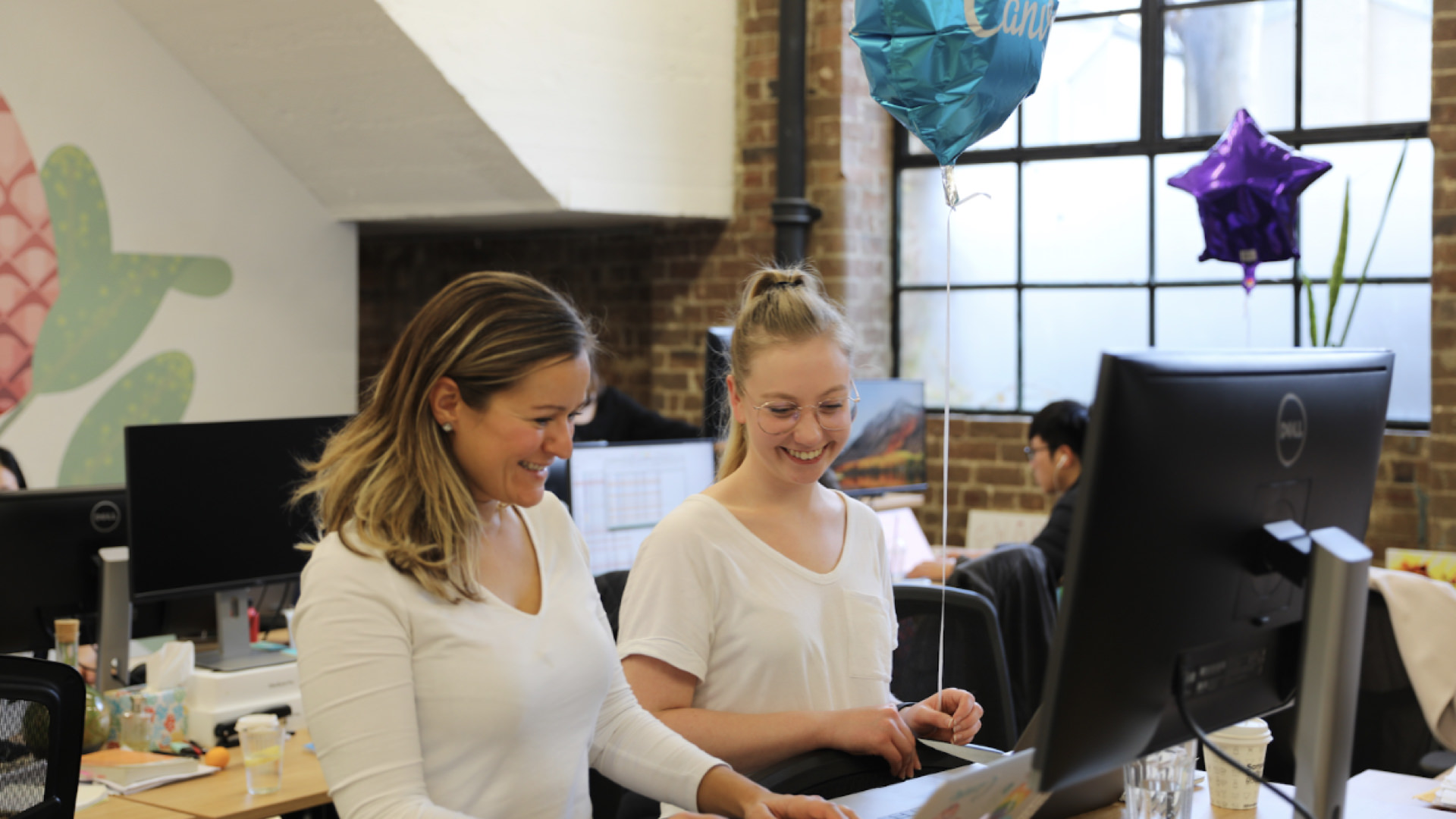
Canva’s Day One Experience
These are some pictures of what the newbies’ workspace will look like on day one.
We have a big balloon for our newbies and so every time someone starts you can see a big balloon.
For all our newbies, it’s really interesting to see who are all the people who have started recently.
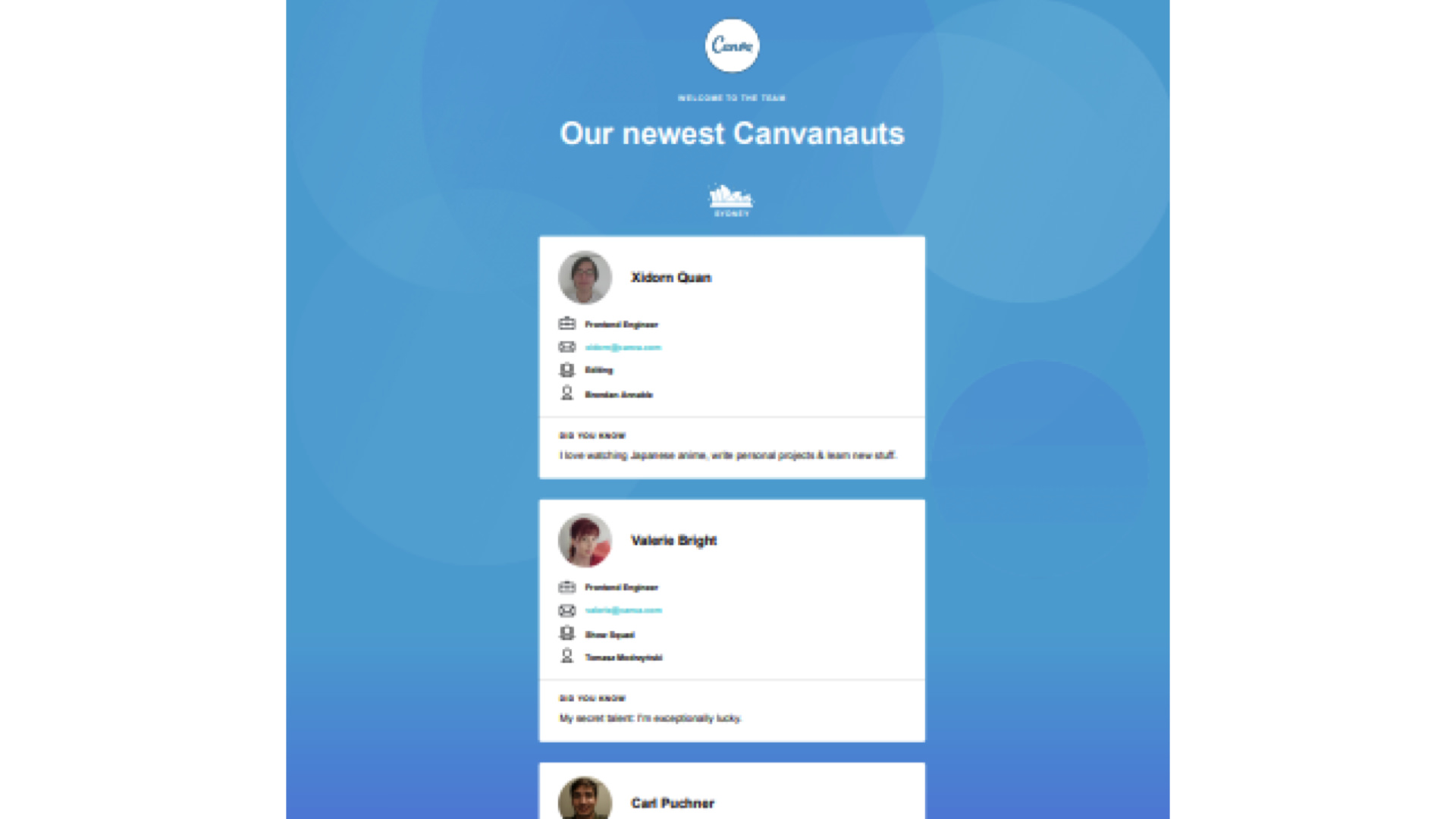
This is an example of a welcome email that has gone out. We also have this on all our dashboards. So we’ll say hey, here are all the newbies that are starting next week. Make sure that you come and say hi if you see them. We add a little fun fact about them.
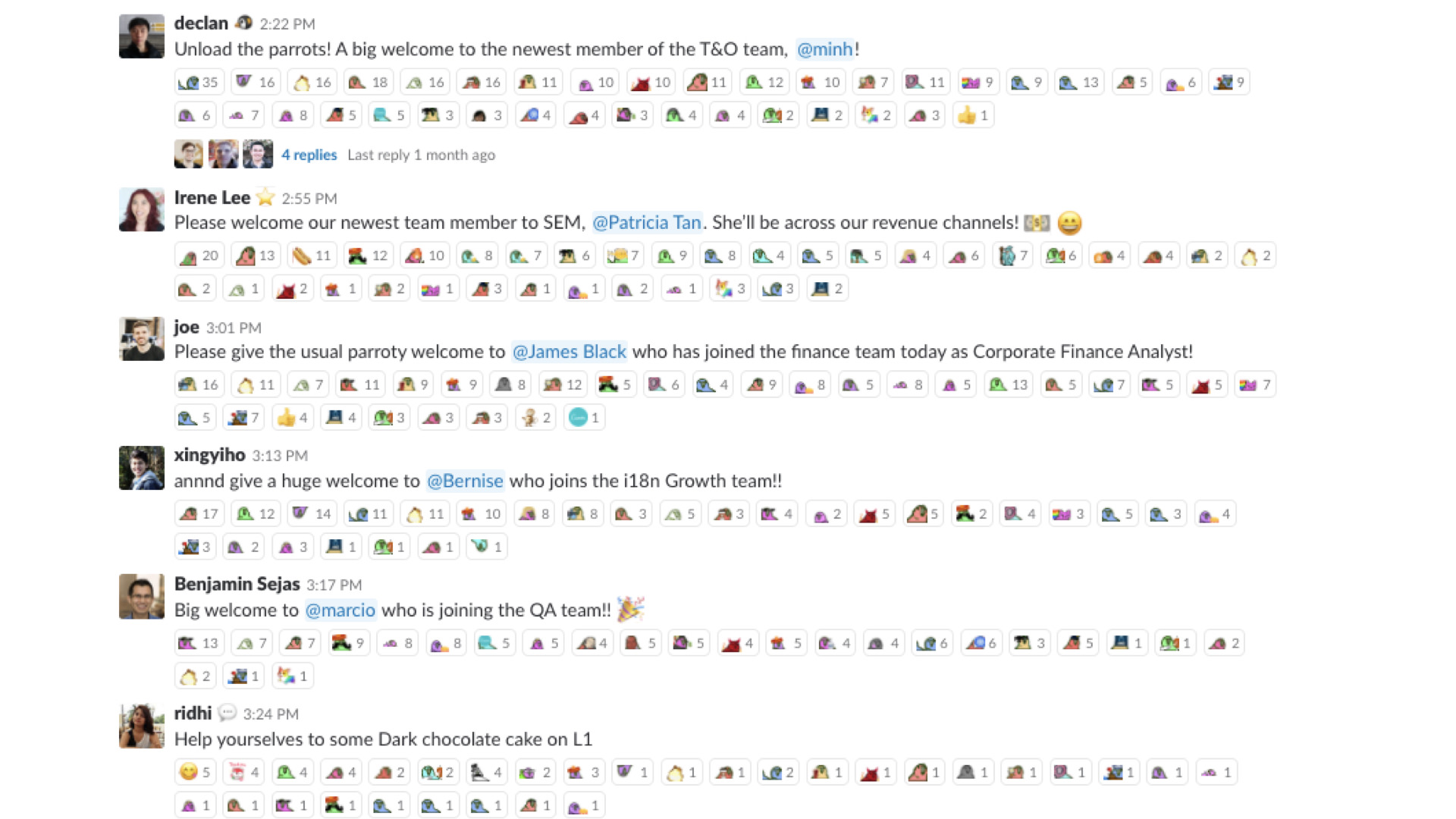
We have a this tradition when people join and they get added to Slack, the mentors will message all of the team and say hey, say hi to this new person joining our team. And so we just pulled all these quotes up.
– [Tegan] This is pretty impressive.
– [Linda] Is this something that anyone else does?
– [Tegan] We do it here at Enboarder but I don’t think we have enough people to create all the different emojis. That’s quite impressive. It sounds like that the experience is really a team effort.
– [Linda] It absolutely is a team effort. We have so many people in the backend working to make sure that newbies have a great experience. It used to just be Team Happiness and one person looking after all these little pieces but as we’ve grown we’ve been able to have different parts or different teams look after it.
So for instance our facilities team will make sure they have the workspace and the desk setup, complete with a laptop. The balloon is a piece that is delegated to someone else and they look after that part.
And when it comes to onboarding bootcamp it’s actually taken care of by our Canva University team, who are our Learning and Development function.
They’re the ones that coordinate all the sessions. They run the whole bootcamp. As we’ve grown, everyone has a really clear idea of what parts they own and everyone is also really open and will communicate if there are changes to be made.
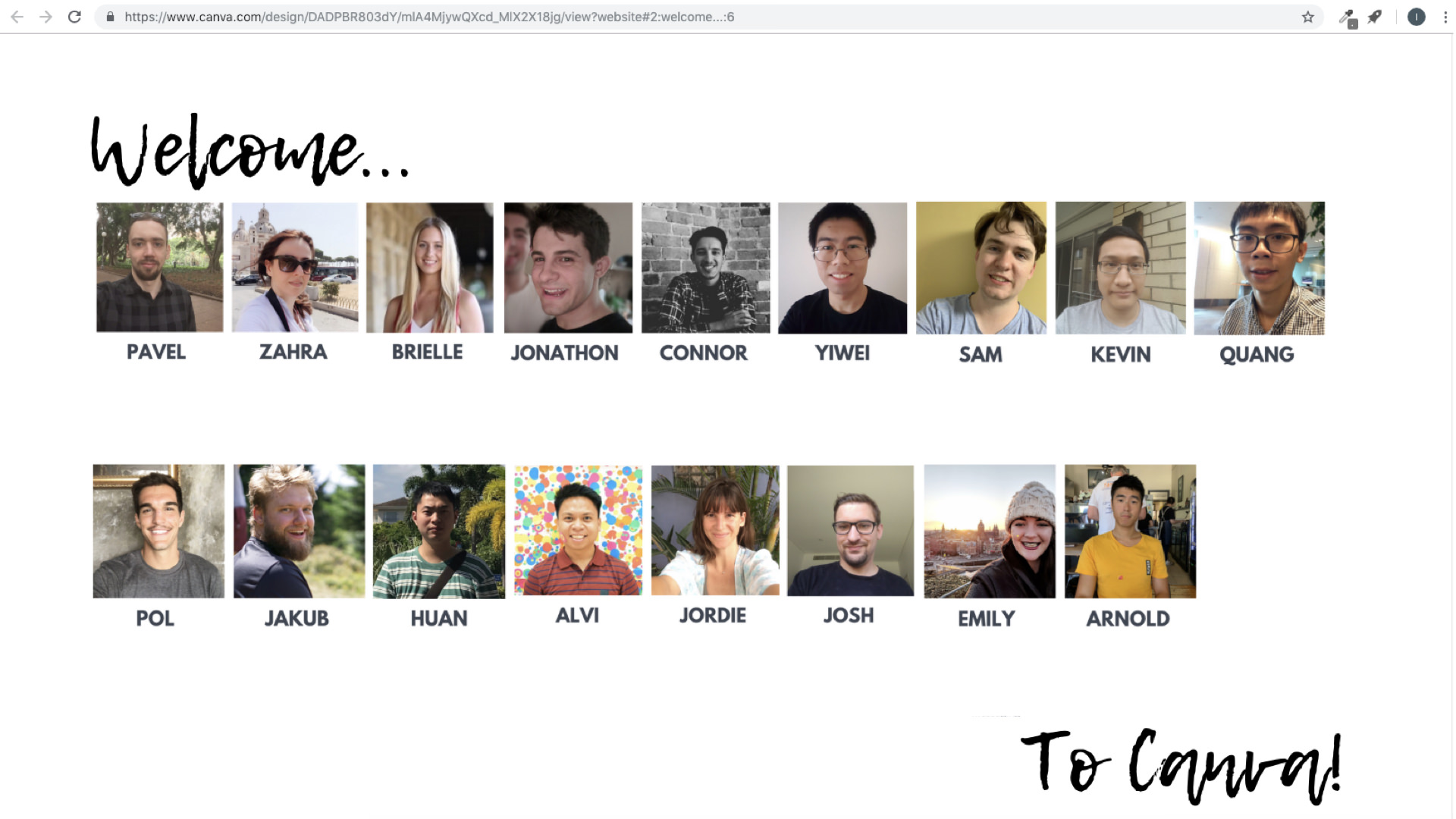
This is an example of something that we’ve started to create for all our new onboarding cohorts – it’s a website that we create in Canva. It’s customized for each of the cohorts, to welcome them and show what they should expect. It’s another way to compile all the different links that they’ll be referring to during the boot camps. They can always come back here.
We list all the people that they will be meeting that week, and across all our sessions, we try to introduce them to as many different people in the company as possible. So in addition to the links to the different sessions, we also provide other useful links.
So this website is something that they can come back to but also something that’s really interesting to look at, really visual and not just a list or a doc.
Week 1 at Canva: Onboarding Bootcamp

At the moment, our onboarding cohorts are in groups of 15 to 20. The biggest ones we’ve had are around 30 people.
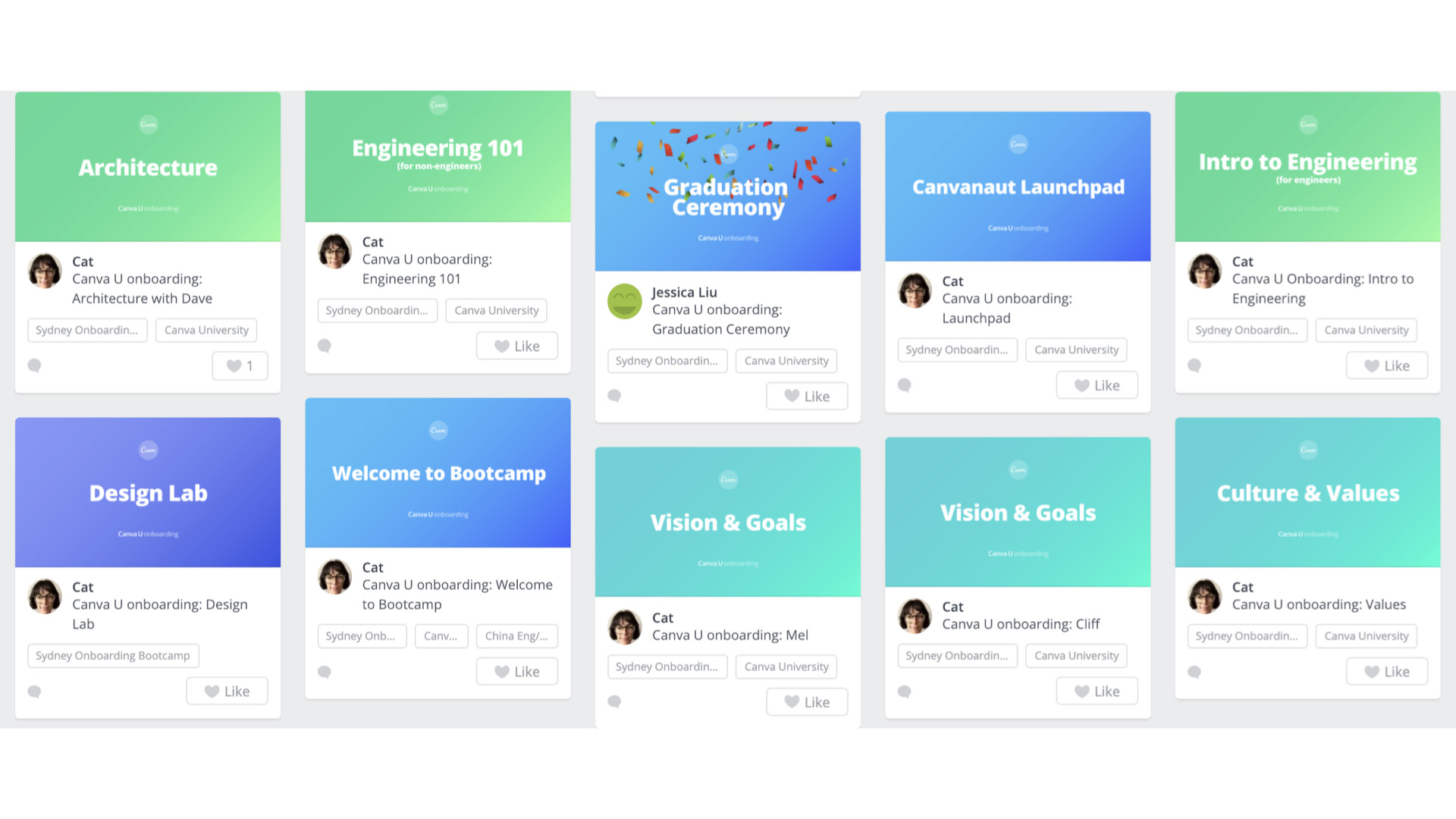
For our bootcamp, we have done up some beautiful presentations, and we’ve also gone through the program to ensure that there are activities. So it’s not just pure learning but also about being able to apply some of that learning.
The favorite one for many people is the design lab. This is a two hour session where they actually learn to design with Canva. Not only do they learn about the product, but they also get a feel for different tips, and tricks, and shortcuts, so it’s really practical.
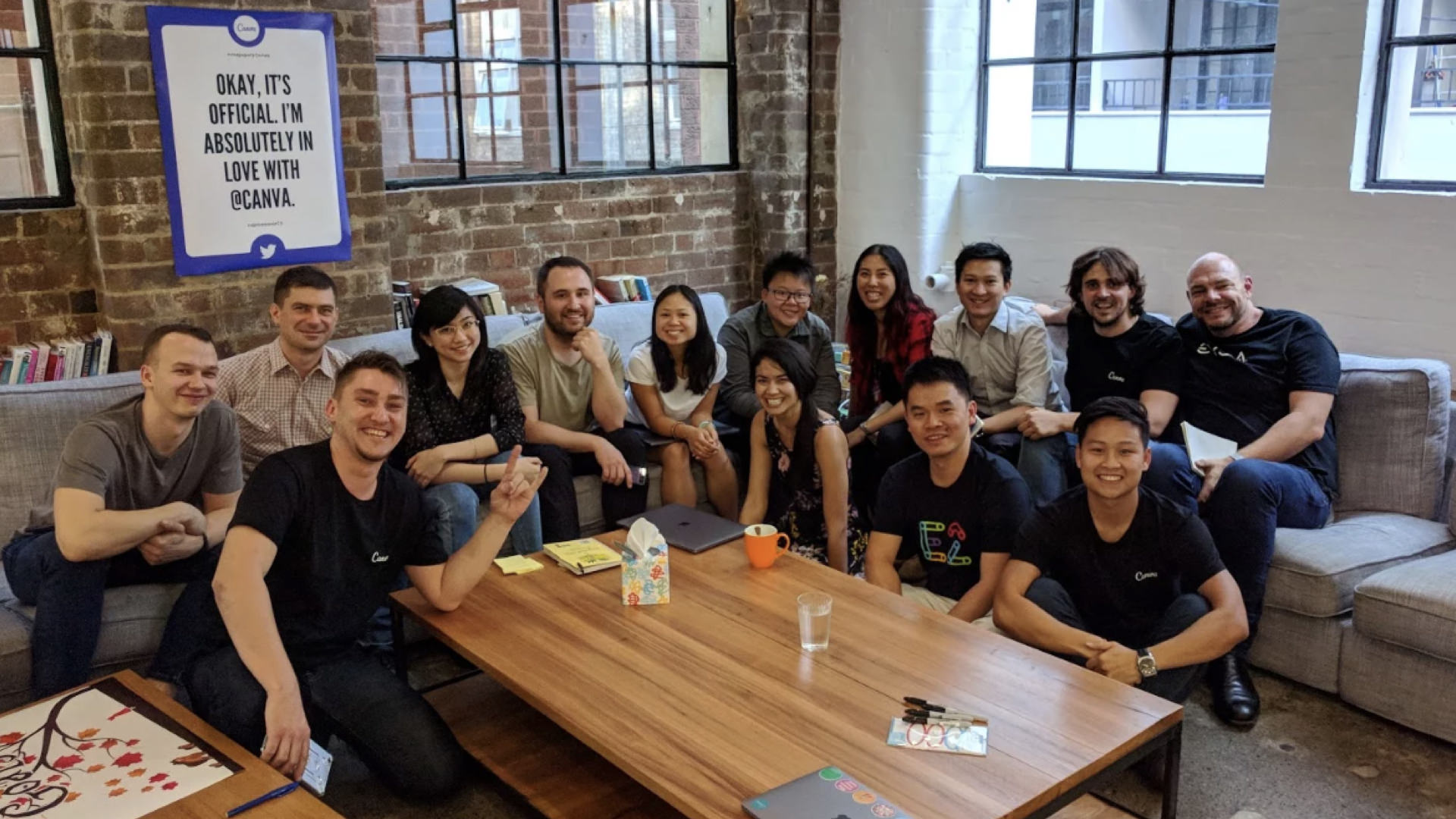
During our onboarding week, which happens every single fortnight, the cohorts will meet with the Canva founders Mel, Cliff and Cam. And that’s really important. That’s something that we would always want to continue to do, so ensure they are getting that Canva vision straight from the founders of the company.
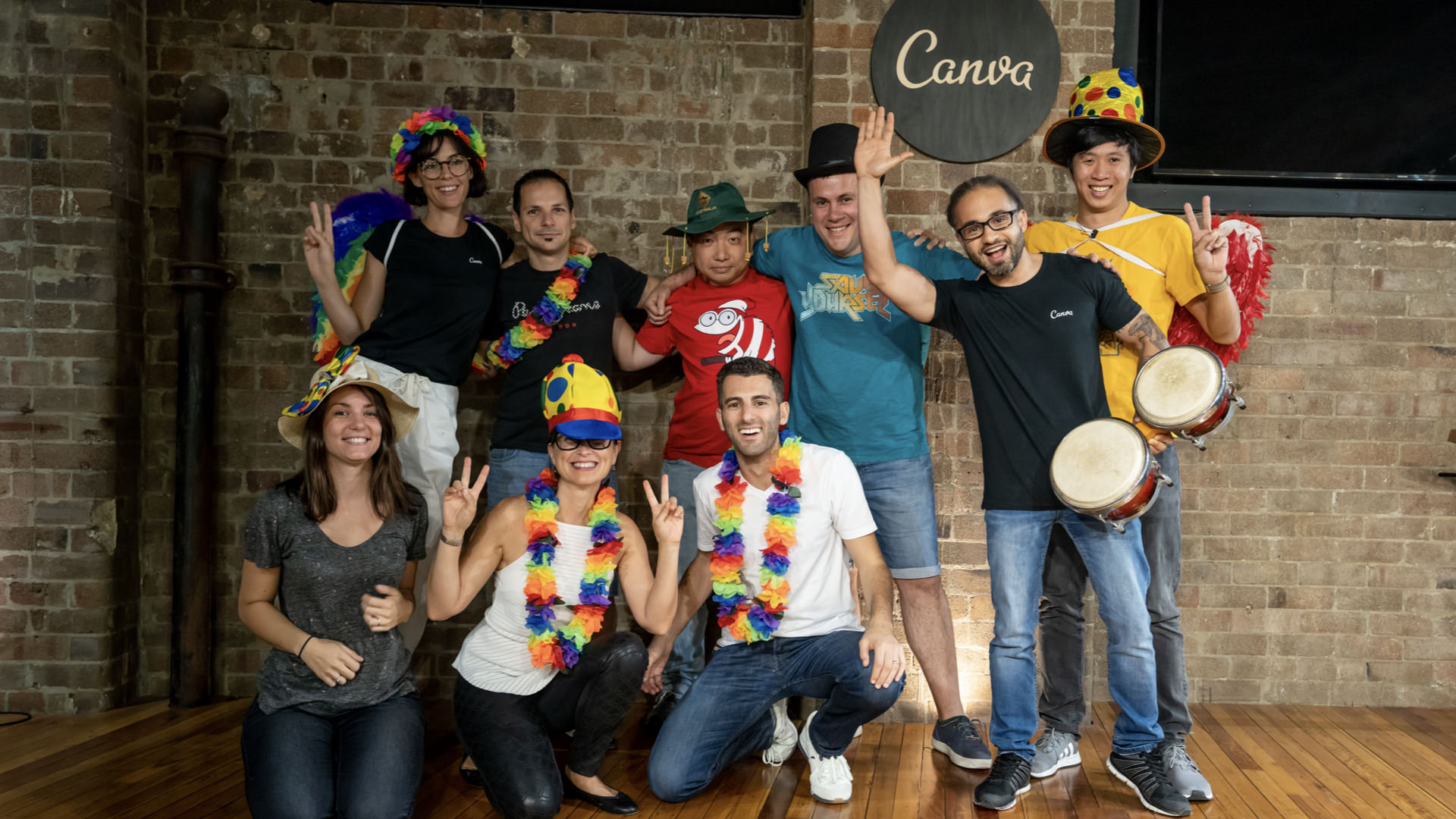
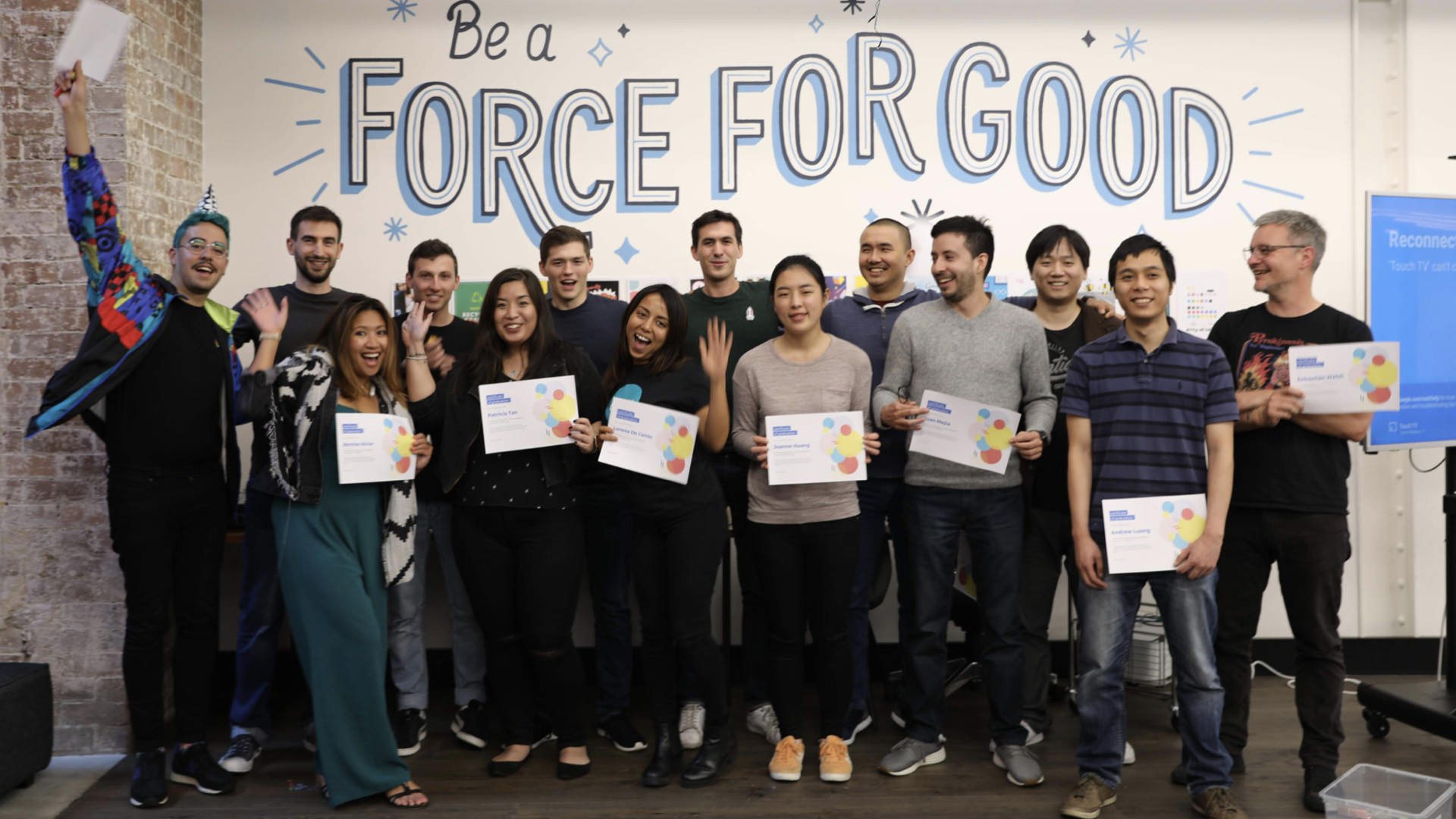
Finally, at the end of the week, we do a little graduation ceremony. And so we do a bit of a celebration and we just make it a little bit more fun. We have little certificates. We have little party hats, and we just make it a little bit quirky. We really want them to create a cohort community and someone that they can go to.
Connecting with the Wider Team After Week 1
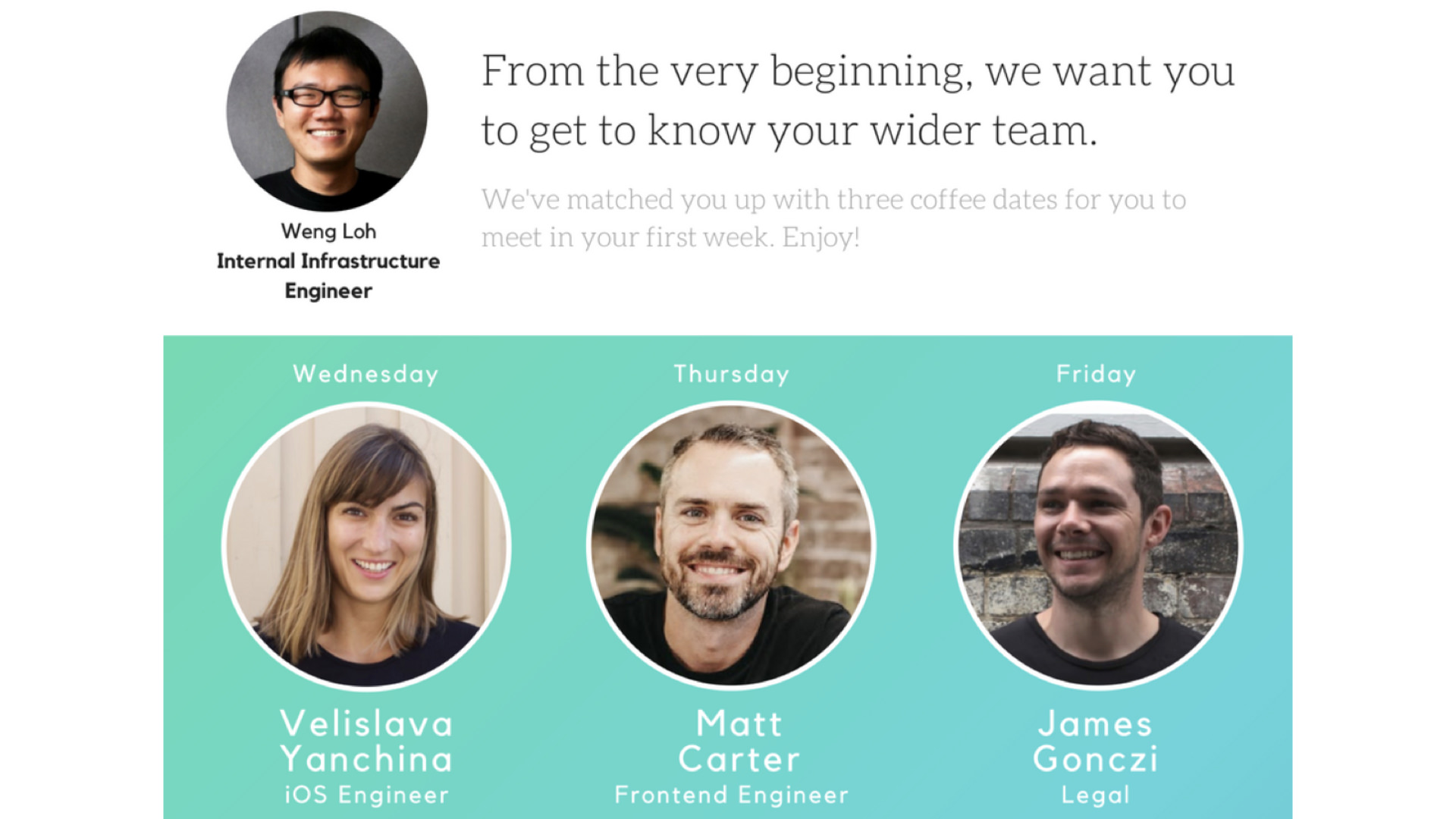
During the first few weeks or so we also match people up with people for random coffee dates. And that’s a way for them to just get to know people that they might not actually work with in their day to day. That’s been something that our newbies really, really love.

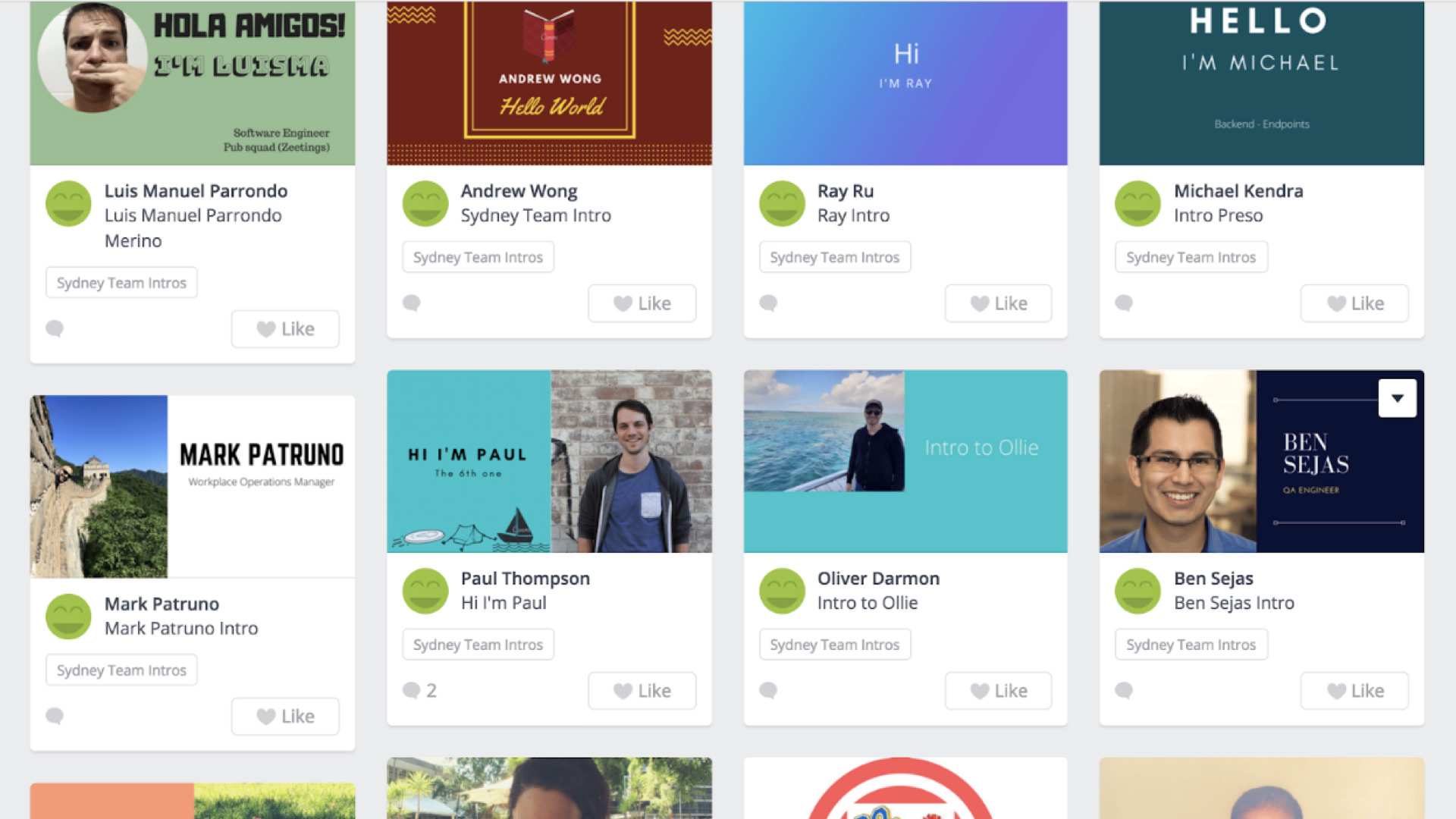
During the second week at Canva or the third week we ask the newbies to do a presentation of themselves back to the team. Back in the old days we actually used to do this in front of the whole company. But then we realized that we were getting a lot of new people. So we’ve split them out into more of the team-based presentation now. So you will intro yourself with your team, and it’s also less intimidating when its only 20 people.
So yes, everyone does a Canva design introducing themselves, and then we share their design with everyone.
Keeping Up with Engagement
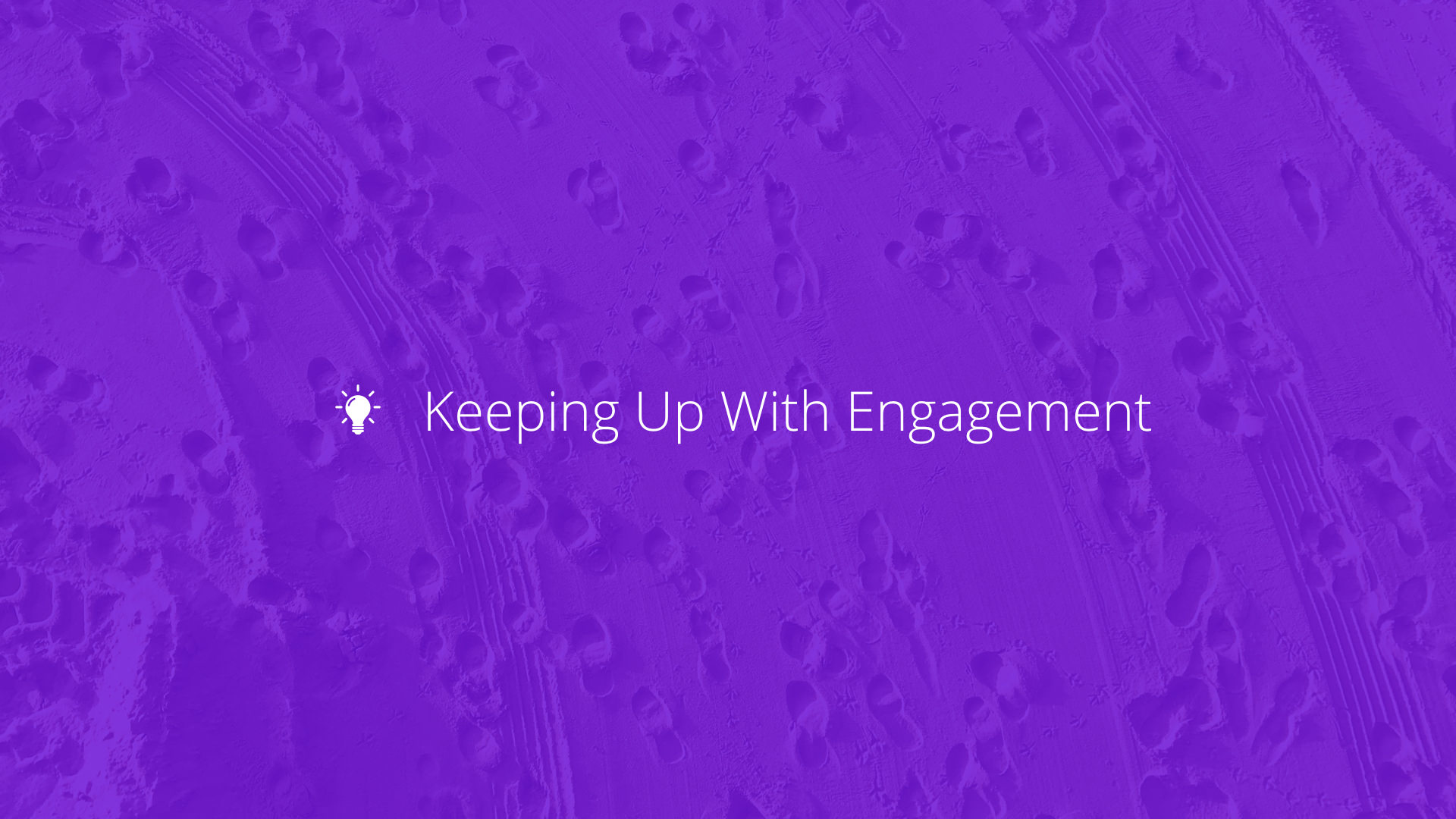
– [Tegan] Beautiful. It’s quite a journey and a lot of commitment that goes into creating this great experience, so how do you maintain the emotional momentum and engagement with employees as they settle into their day to day?
Canva’s Mentorship Program
– [Linda] We have a two-pronged approach to onboarding.
The first is that formal learning program and bootcamp we talked about before.
The second is actually having someone there, like the mentor that is responsible for that person, responsible for their growth. They check in with them daily. We really rely on the mentor to be able to have good one-on-ones with that person. To be able to understand what are the challenges that they’re facing. And they’ll come to us if there are any problems that they would like to troubleshoot.
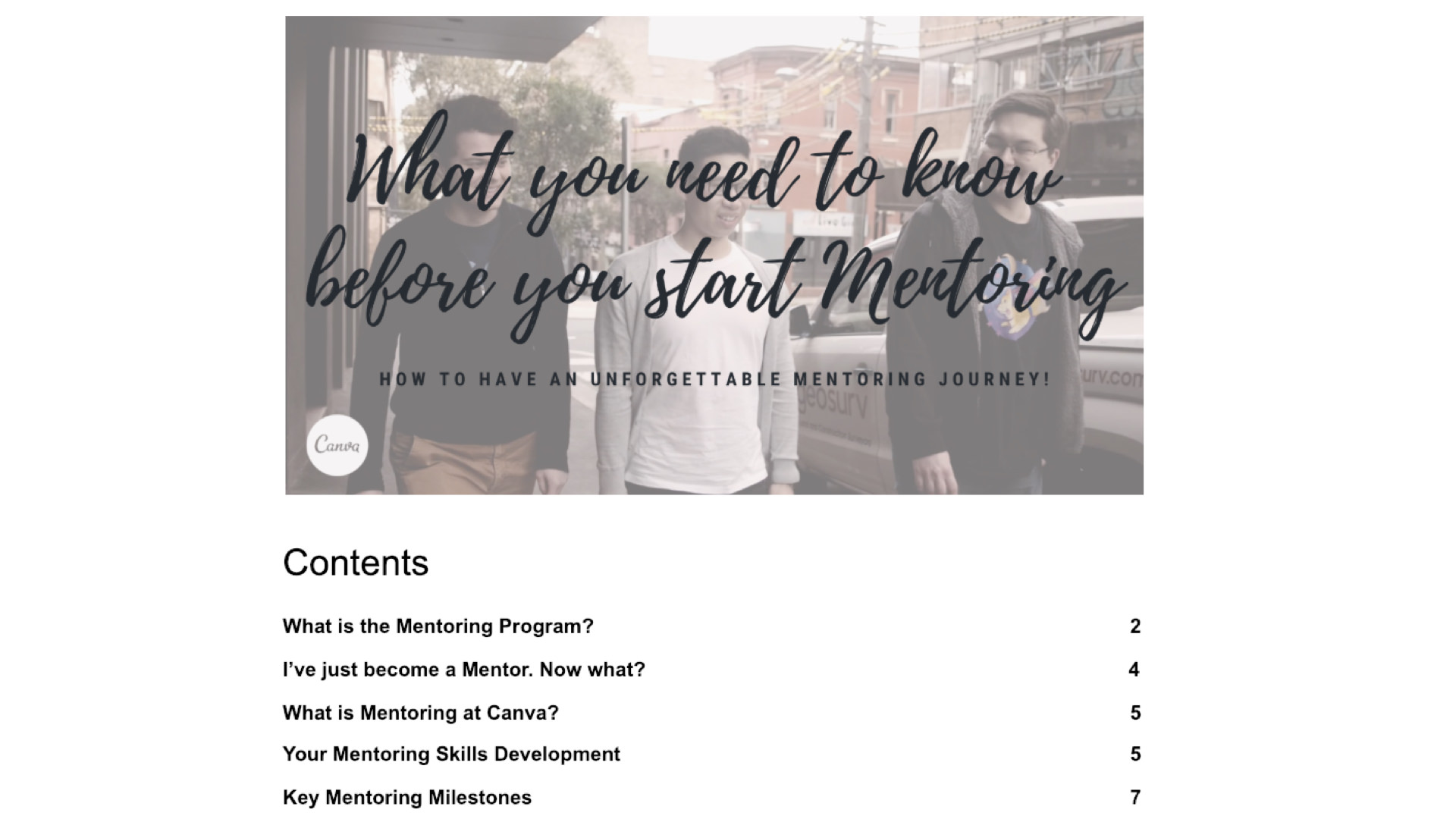
Off the back of that we’ve built a detailed mentoring program. Once you reach six months at Canva, you have the option to take on that responsibility of mentoring someone else. If you’ve had a great onboarding experience, or if your mentor was incredible, you would want to give that to someone else as well.
We invest a lot in making sure that we have great mentors at Canva. This is an example of what you need to know before you start mentoring. Here’s what to expect, here are all some different milestones that you’re gonna go through as a mentor and how you can better support your newbie.
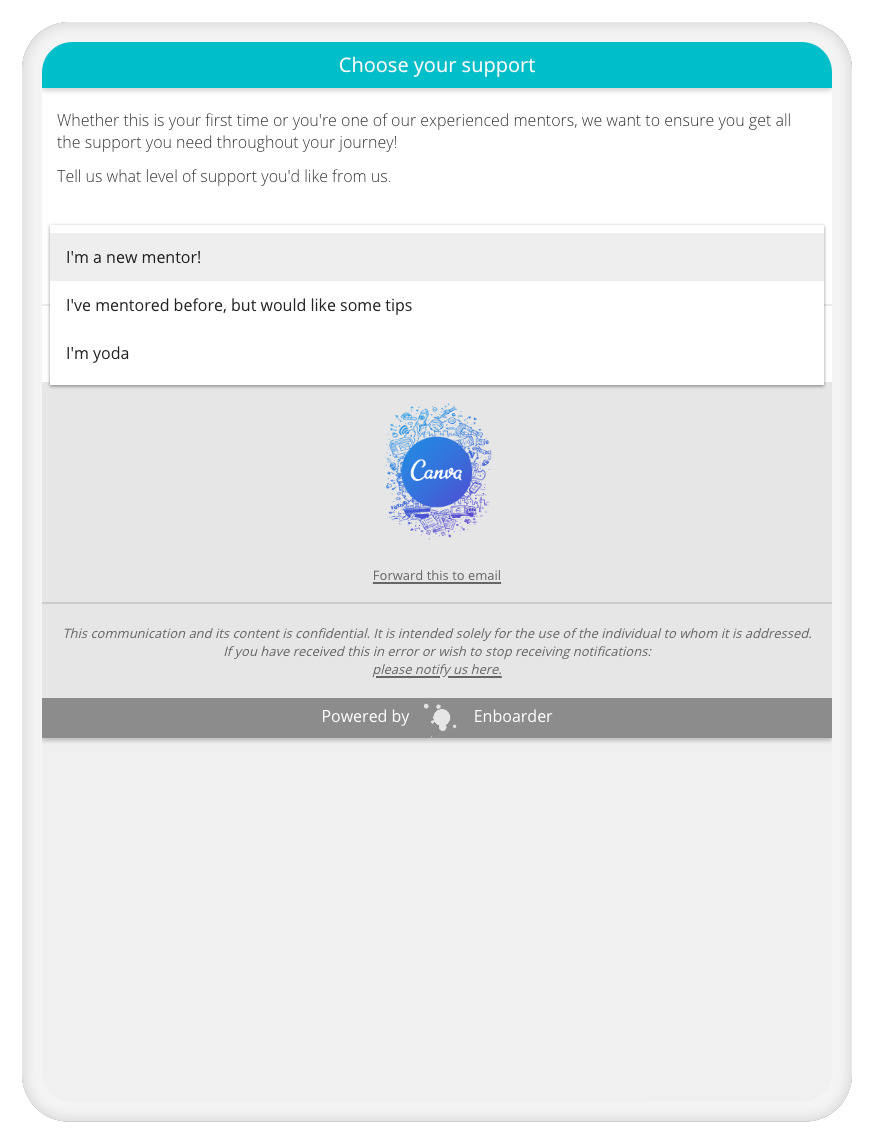
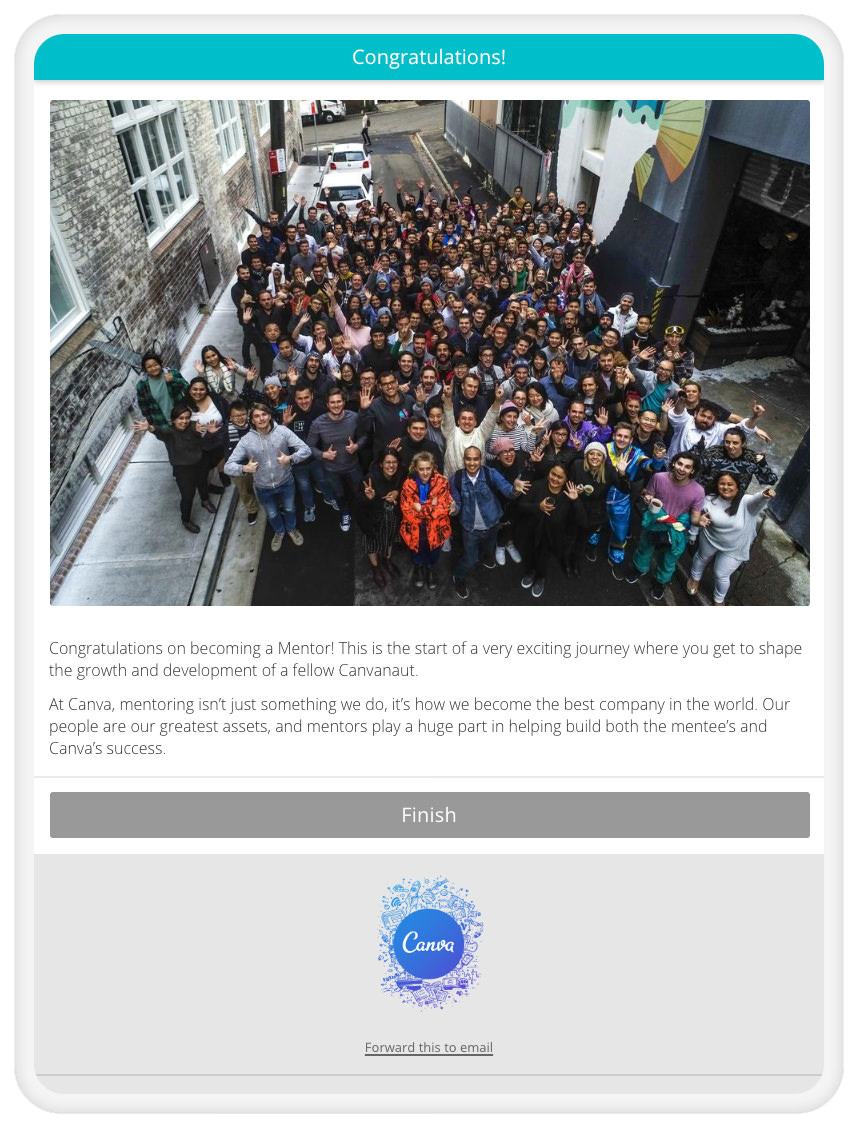
– [Tegan] And what’s the expectation from a mentor? What’s the length of time or the commitment of how long you would be someone’s mentor for?
– [Linda] It’s usually somewhere between the first six months, depending on the person. We usually see that relationship start to transition anywhere between three to six months.
We’ve actually built out a mentoring program and we’ve also supported that with an Enboarder workflow as well. So that’s automatically triggering off messages to the mentor at different times to give them reminders or to share information that they might be interested to know about. These are some screenshots of what we’ve built out, like congratulations, or content that recognizes how important that role of a mentor is.
– [Tegan] I love the logic that you’re using here around choosing the different support levels.
– [Linda] Yeah. We recognize that if you’re a new mentor you probably want more support. Whereas if you’re a really experienced mentor you don’t need that support but its still great to get some check-ins at some parts of the journey. We were really conscious that even mentors need different levels of support and that’s why we built this workflow in this way.
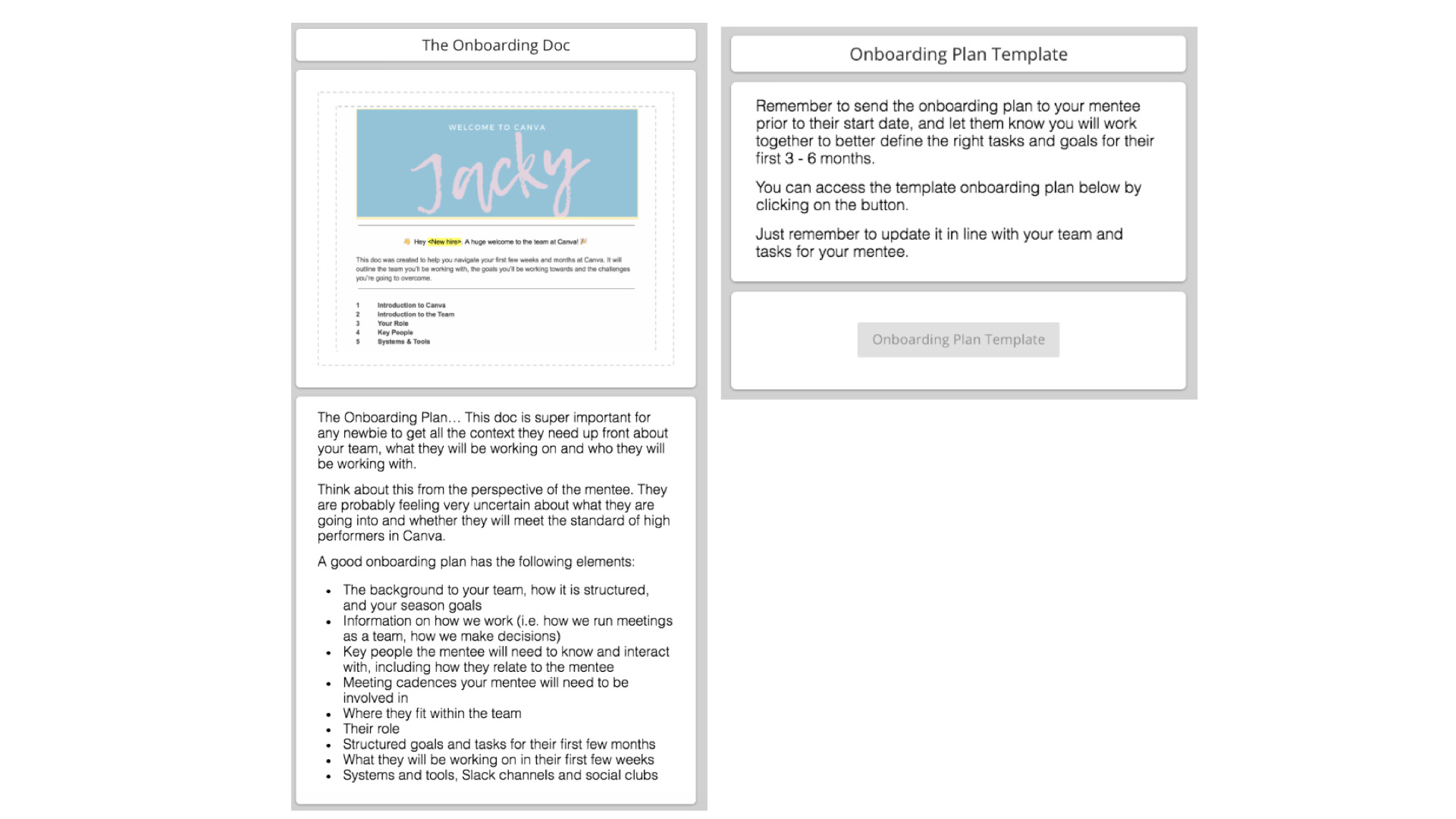
And this is another example of a message we send to mentors. We make sure that all our mentors prep an onboarding plan for that person usually about one to two weeks before they start. This is a message going out to the mentor to remind them to prepare the onboarding document. It’s a really, really important doc for all these reasons. We even share a template they can just duplicate and run with.
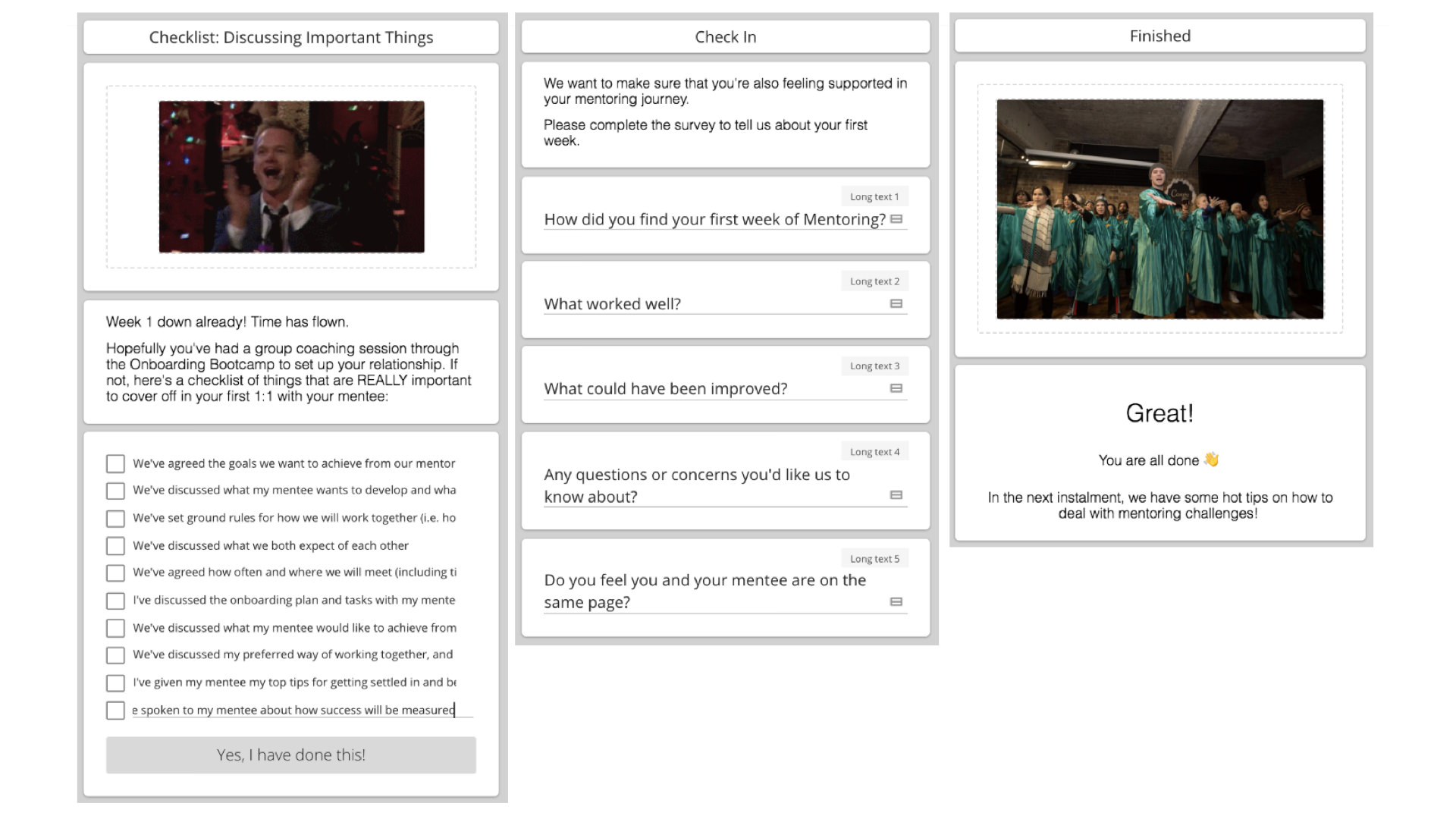
This is an example of a checklist of some of the things that we want to make sure that mentors are doing. We also use this to get feedback from the mentor – how have you found the mentoring journey so far? And what would you like more support with?
– [Tegan] And what’s the feedback been like so far?
– [Linda] We’ve actually just launched the mentoring journey, this month. We’ve been rolling out workshops but the actual content and workflow rolled out this year. We’re still really excited for the feedback to come through but thus far everything has been really positive.
Three Onboarding Tips from Canva
– [Tegan] That’s awesome. Before we go into any questions, do you have any three key tips, or what would you say about the non-negotiables for making and creating, and maintaining a really great experience?
– [Linda] The first tip is to make sure you create very special moments. Everyone does onboarding in a different way but if you’re creating moments that are really memorable and special for people then they will remember that and they will be more engaged.
We do this with little things. When people sign the contract, we make sure they receive some swag in the mail, which includes a T-shirt and a little message from the team. And so that’s an example of creating that moment. People get that and they feel really special. If you can take some of those opportunities to create moments in onboarding, it’ll go a long way.
The second tip is learning and being aware that as you grow, there will be a lot of changes. Something that is working now is not necessarily going to work at a different scale. It’s just being aware of that, and being adaptable to change.
The third tip is just creating connection. We have so many opportunities in our onboarding program for people to speak to people, to meet new people. That’s one of the reasons why we didn’t want to have online learning. We have all our onboarding sessions face to face. So that people actually meeting can ask questions and create a relationship with people in the company.
– [Tegan] And the cohorts I’m sure is really special for that.
– [Linda] Yeah.
Q&A
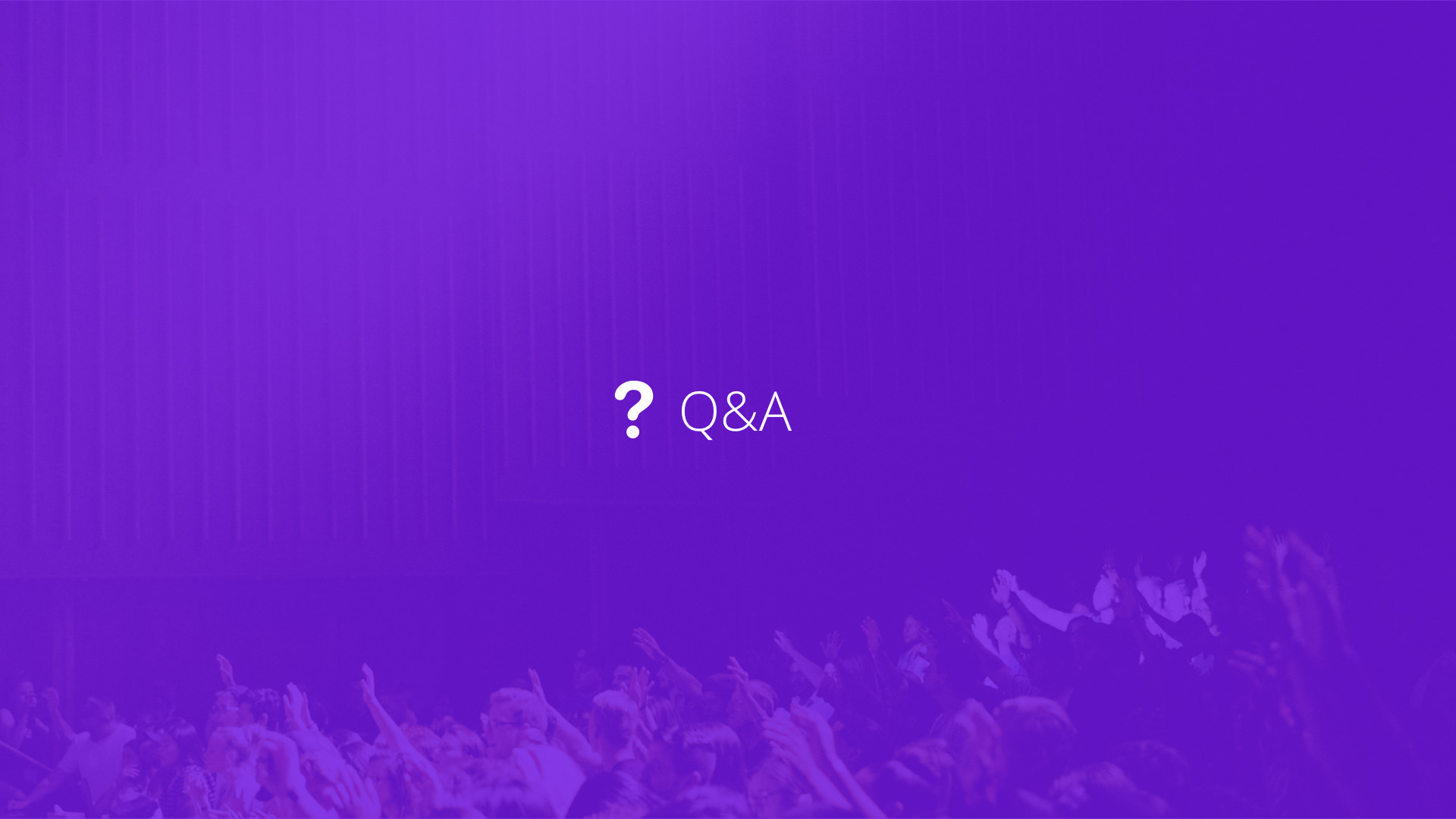
– [Tegan] Awesome, so I’ve got a few questions now. How do you actually select the mentors for new staff and how do you manage the expectations of the mentors?
– [Linda] Great question. For most people that may not be allocated to a team we will usually look at the team and what are the biggest needs for the teams that need people. Then we would need to talk to that team and go okay, who is going to be mentoring? So we look at mentoring capacity in either like, is anyone available to mentor? But also is anyone really interested in mentoring as well because we also wanna be choosing people that really wanna be great mentors and wanna get involved.
– [Tegan] Yeah absolutely.
– [Linda] And in terms of managing their expectations, training is available as part of the mentoring program. One of the sessions is really all around, what is your role as a mentor? And all new mentors go through that program.
– [Tegan] And have you seen any changes to overall retention rates since introducing the program?
– [Linda] Our retention has always been quite good. But overall, I would say between last year and this year we have seen a decrease in retention. On the flip side, we actually care about specifically measuring the onboarding program’s engagement levels. So did you enjoy the mentoring program? Would you recommend it to others? And we generally see quite high engagement responses from that too.
– [Tegan] Amazing. And how’s the 360 feedback at the three month milestone received?
– [Linda] Our 360 feedback is very much development and growth focused. So we’ll say what are the areas that you wanna focus on next? And then we usually get the person to nominate people in their teams. So it is very self driven.
The mentor is there to help support and also make sure that feedback comes back really quickly. Once all the feedback comes back, the mentor and the newbie will then catch up in a one on one and talk about the feedback, understand it, and use it to set their next goal.
– [Tegan] Here’s a question around connecting the people outside of Sydney. So do they attend the face to face sessions in week one, or how do you facilitate that?
– [Linda] We have a few different offices and so the Sydney people would meet our people in Sydney and we have another quite big office in Manila with about 100 people so they would then be meeting people in Manila.
– [Tegan] Got it.
– [Linda] When we have people flying between offices we also from time to time will set them up with random coffee dates. So people from Manila flying to Sydney will also get to meet a few different people in Sydney.
– [Tegan] Awesome. I know we’re coming to time but we’ll answer a few more questions. Are your newbies all similar or varied age demographics? And if varied, do you find that different parts of the onboarding process resonate better with different age demographics?
– [Linda] As time has gone by we are finding that our cohorts are a bit more varied. And that’s one of the reasons why we have started to create more resources that will suit different learning styles. There’s a lot of stuff that will be delivered face to face but we also send through a whole bunch of resources for them to read later on their own time.
With this I don’t find that it’s particularly an age preference. It’s really just a personal preference. So some people might say oh, there was a lot of information in week one. And some other people might really like the fact that all the information was delivered in the first week, so they could focus on the work in the second week.
– [Tegan] And how are you measuring the effectiveness of the onboarding program?
– [Linda] Yeah that’s a great question. We haven’t really measured anything around whether they coming up to speed faster. We’ve so far only measured what’s their satisfaction with the onboarding program. The next step is to ensure our sessions are actually facilitating the onboarding. We haven’t quite got to that stage – we’ve just implemented a really engaging experience, so the next step would be to measure effectiveness.
– [Tegan] And from the feedback you’re getting from your new starters, what’s the one key behavior you do within the onboarding that makes the biggest difference for them?
– [Linda] Well this actually circles back to the mentorship piece, which is one of the the biggest changes that we’ve made in the last six to 12 months.
Through great mentors we get really engaged newbies, and that’s feedback we’ve gathered. We’re seeing that mentors have a really big impact on how consistent the experiences are, so having a really great mentor versus having someone that is not so engaged.
Another big impact from the onboarding bootcamp is the knowledge about the product itself, thanks to the Design Lab sessions. People are actually learning all about product from the get go.
– [Tegan] And how do you manage accountability with mentors, particularly if the mentor is missing key dates on the induction program?
– [Linda] We have month one check ins with each of the newbies, and that’s looked after by the Team Happiness team. So we will check in with that newbie in person and we’ll ask them some questions. We can usually gauge how they’re feeling supported by their mentor. If we think that there are areas of concern we will have that conversation with the mentor.
– [Tegan] Beautiful, and what would you say is the percentage of face to face learning versus online and on the job?
– [Linda] We like to stick by that 70, 20, and 10 rule. Which is 70% is on the job. 20% is through mentoring and 10% is through actual learning. So that 10% is really what that first week is all about and then actually the majority of the other time, which is 90%, is going to be on the job and working with their mentor.
– [Tegan] And any tips around keeping mentors engaged or is it more a case of identifying the right people?
– [Linda] It is a bit of both. There are a lot of people that are new mentors that just don’t know what that’s about and so we are also really conscious about crafting a great experience for mentors. And a lot of that is just through more support. So one of the great things that Canva University team rolled out as part of the mentor training were these co-check circles. So essentially we would get cohorts of mentors to come together at the end of the first week or at the end of the first month, at the end of the second month. They share the challenges that they face as a cohort. And then they help to problem solve each other’s problems. And that’s a really, really great way that we keep the mentors engaged, while making sure that we’re constantly learning through everyone’s experiences and if there’s a particular area that mentors are struggling then we can jump in and support them more there.
– [Tegan] That’s great. And is the one month check in the only non-mentor driven check in? Or do you have two, three, four month check-ins as well?
– [Linda] Generally most of the check ins are with the mentors because they are the people that work mostly with that person and so will understand what they’re going through. We generally don’t check in with people every single month unless there is a special case.
– [Tegan] Got it, perfect. And when you actually introduced the onboarding program how did you find the business react to it in terms of not having the new person start in the team until week two?
– [Linda] I think that this is definitely a business decision that we wanted to make sure people were investing the time in setting foundations. So we knew that they’re not gonna be actually working on tasks, but we wanted them to get a broad knowledge of all the different pieces of the company, how people worked together and so we thought that setting those foundations would actually pay off a lot more in the long run. So that’s why we made this decision that we do want people to invest that initial time in learning. And then getting that context. And they’ll have plenty of time to actually sit with their team.
– [Tegan] Awesome, well Linda thank you so much for sharing its been really awesome to hear more about how Canva are leading the way in employee engagement.
Certainly very refreshing to hear some of the initiatives that you’re rolling out. I can certainly see why Canva has been voted the number one workplace. So congratulations and thank you so much for sharing.
– [Linda] Great, thank you. Thanks for having me.
